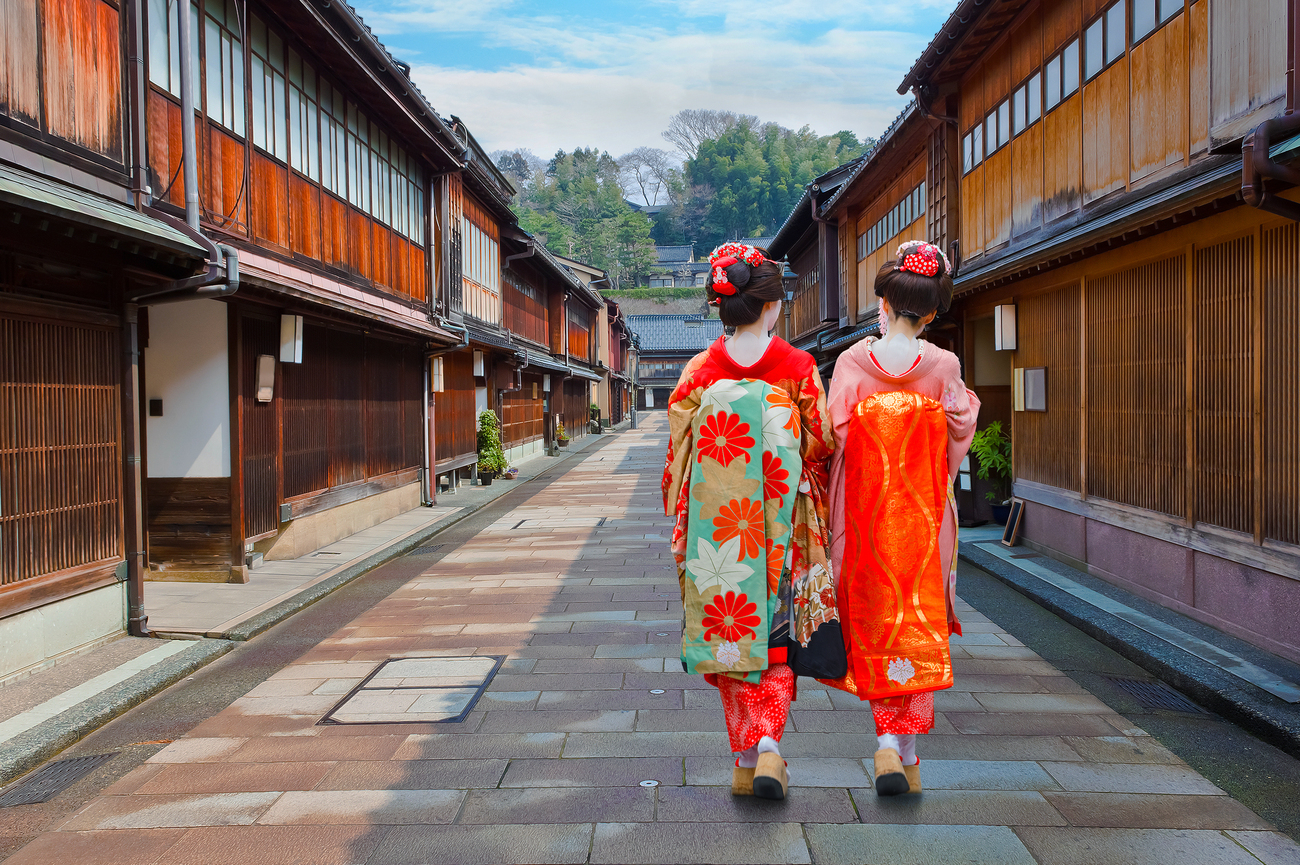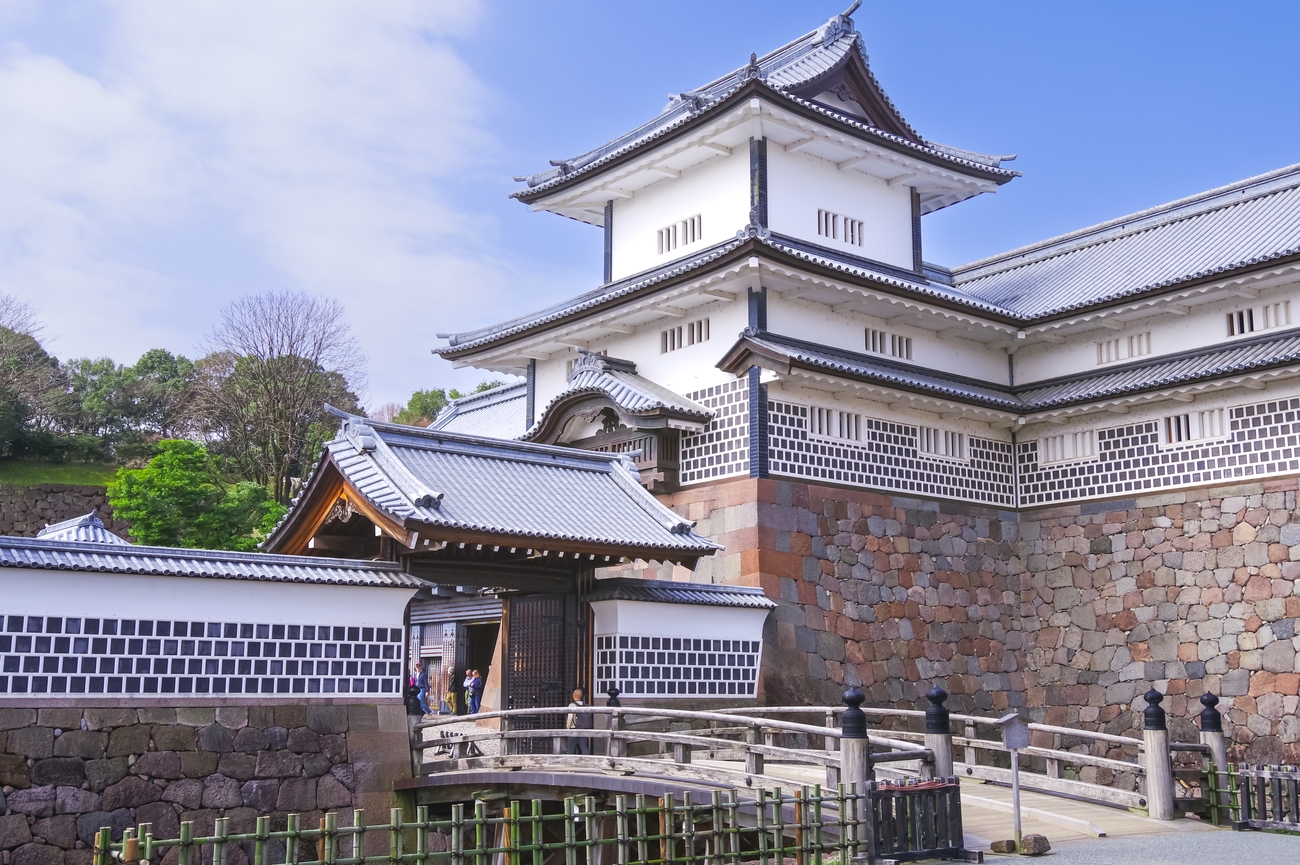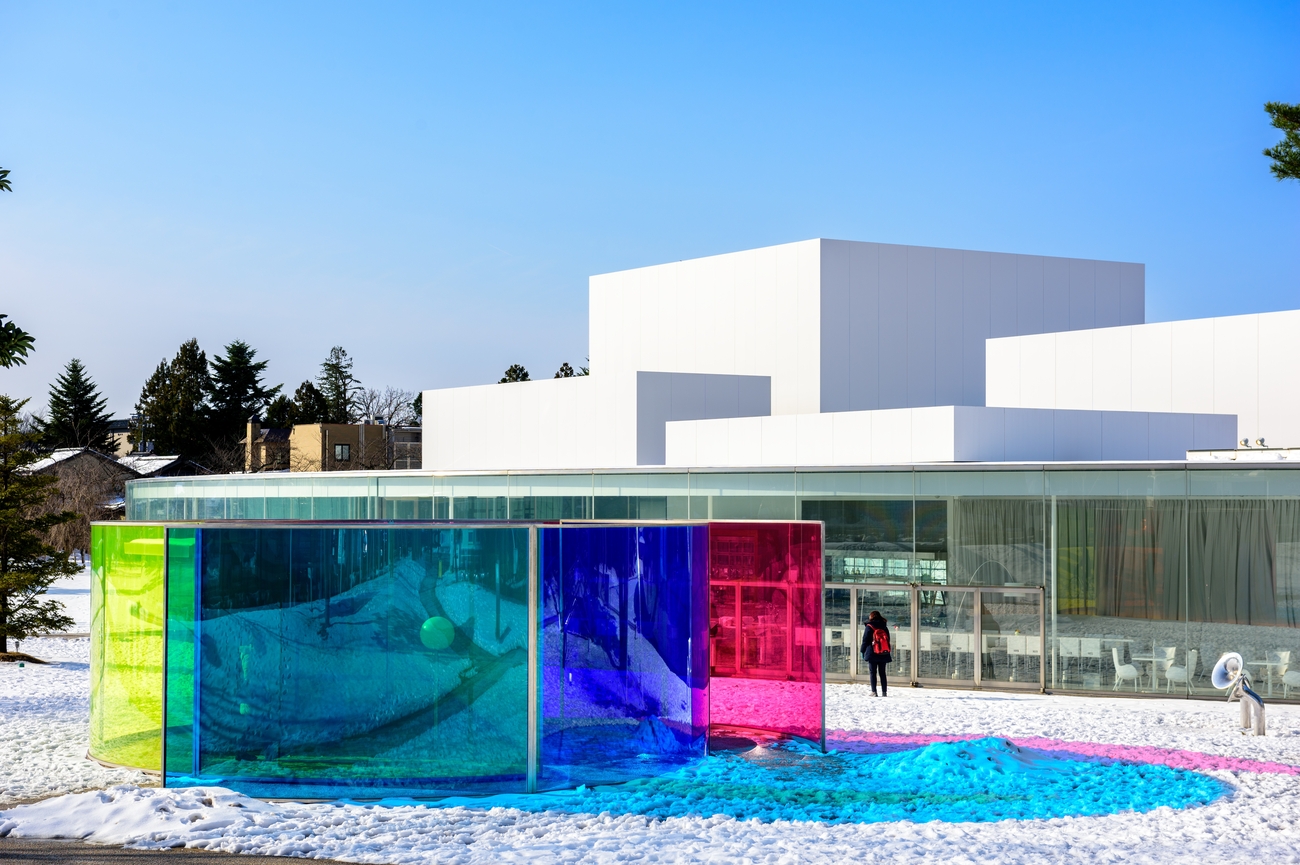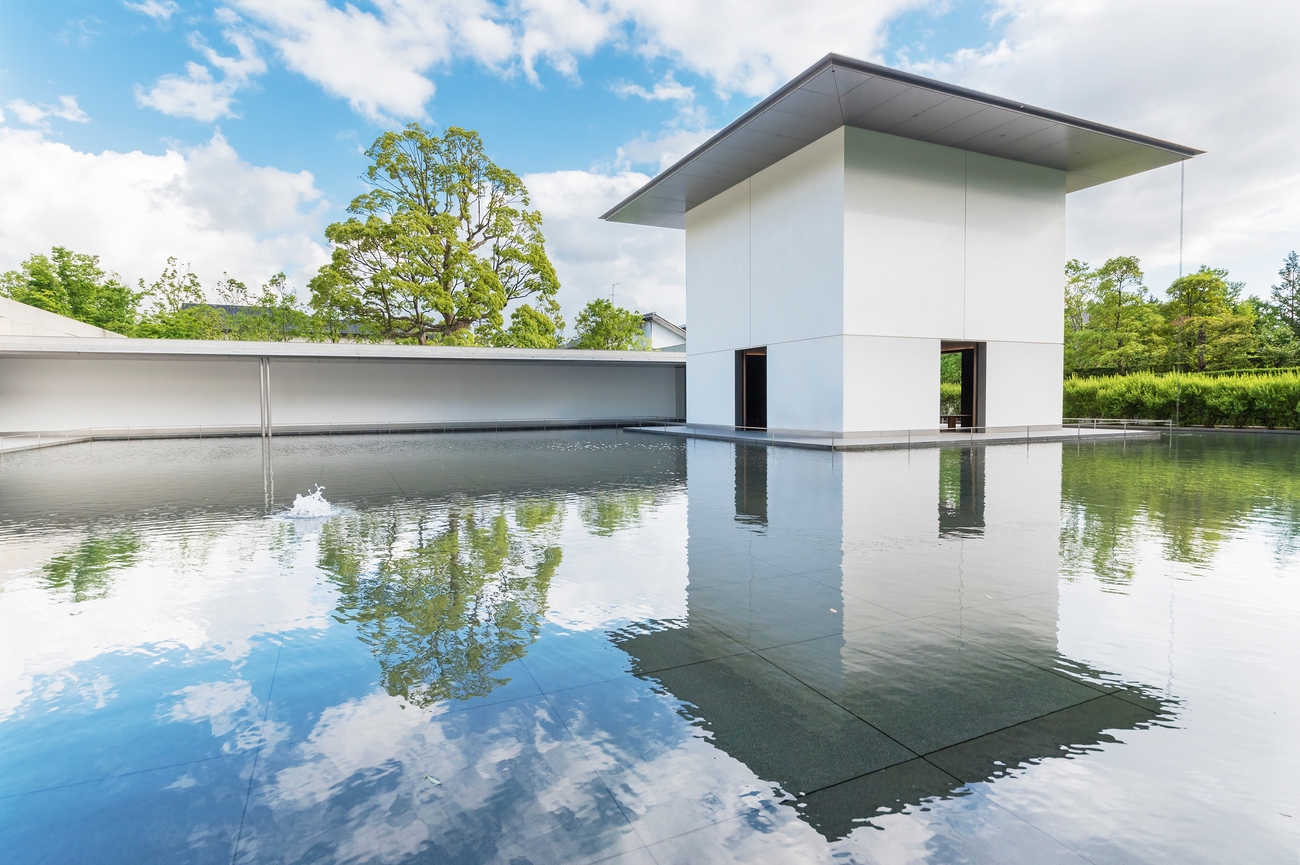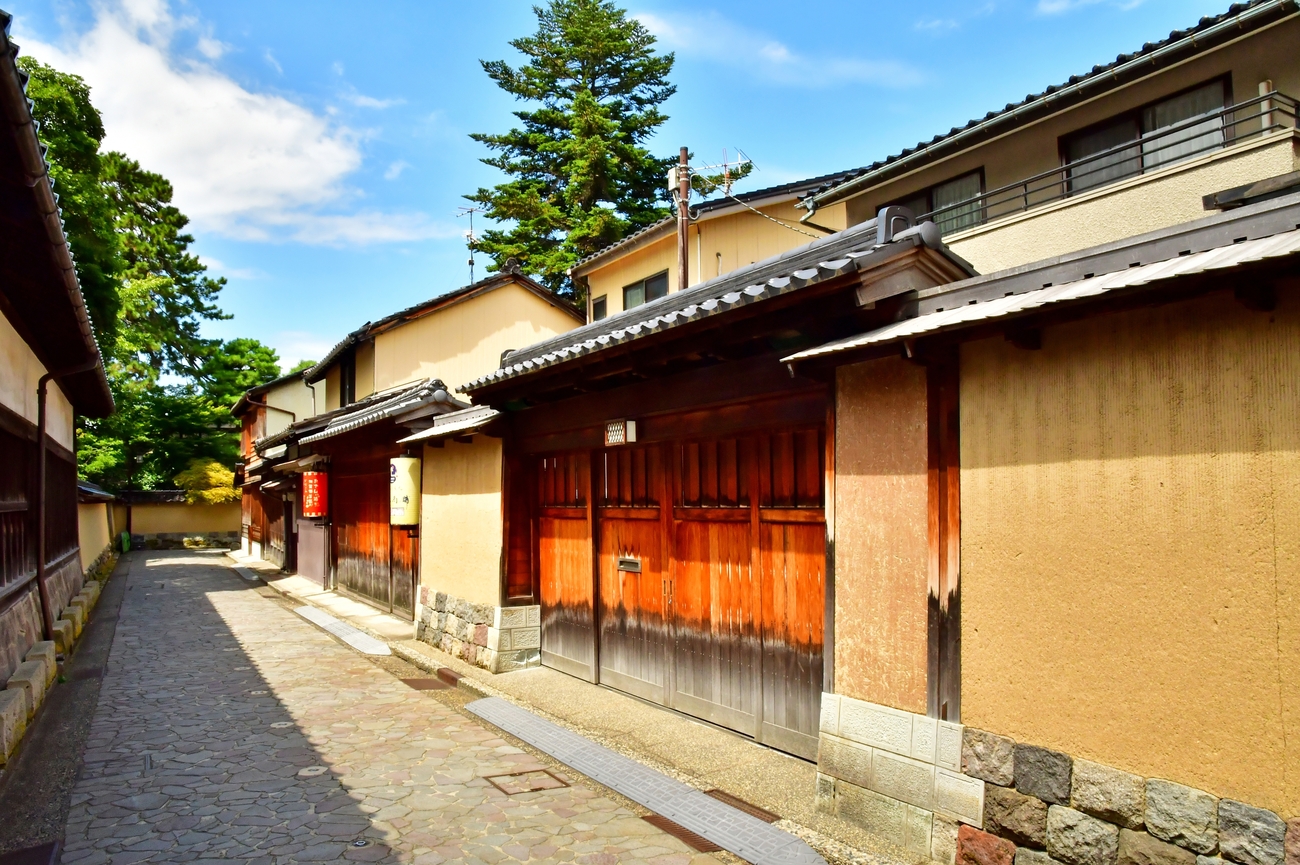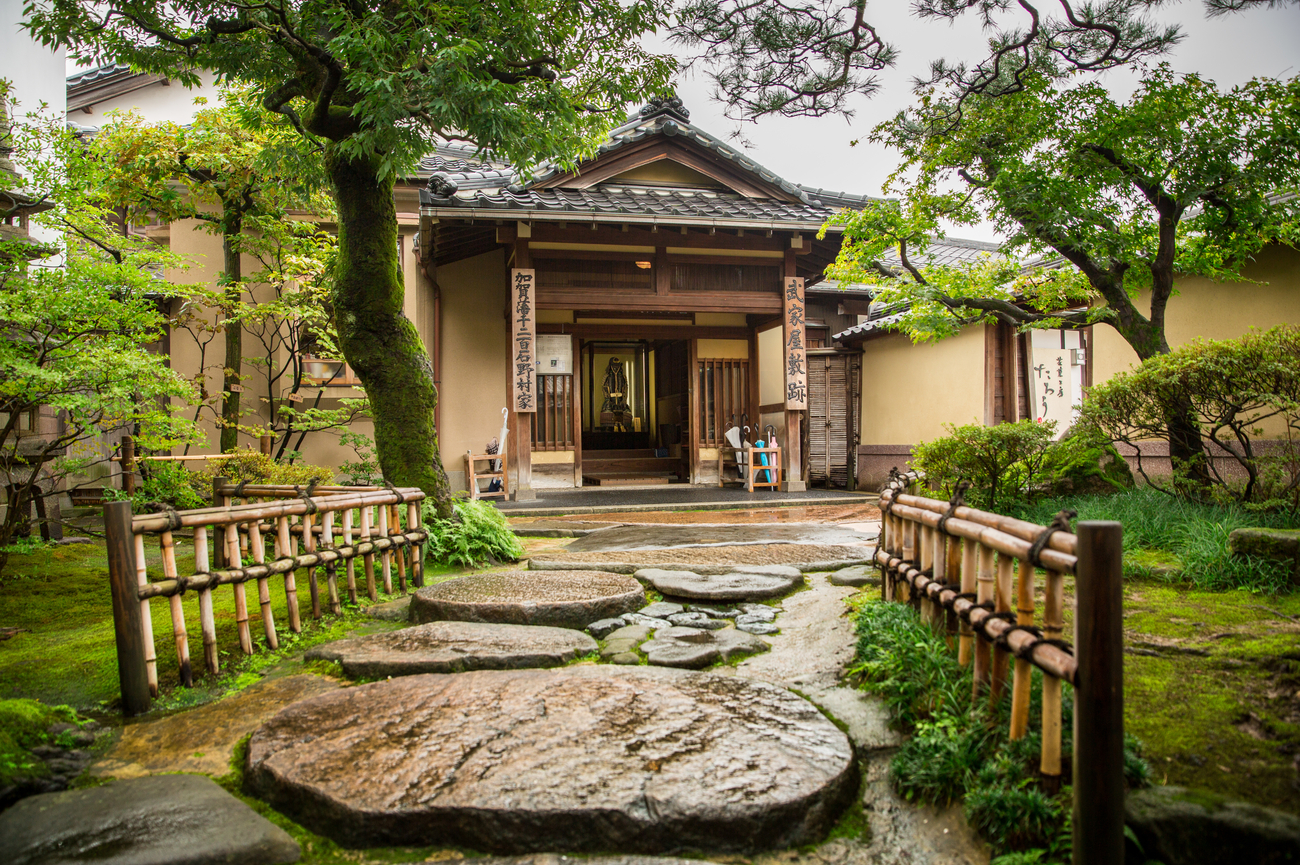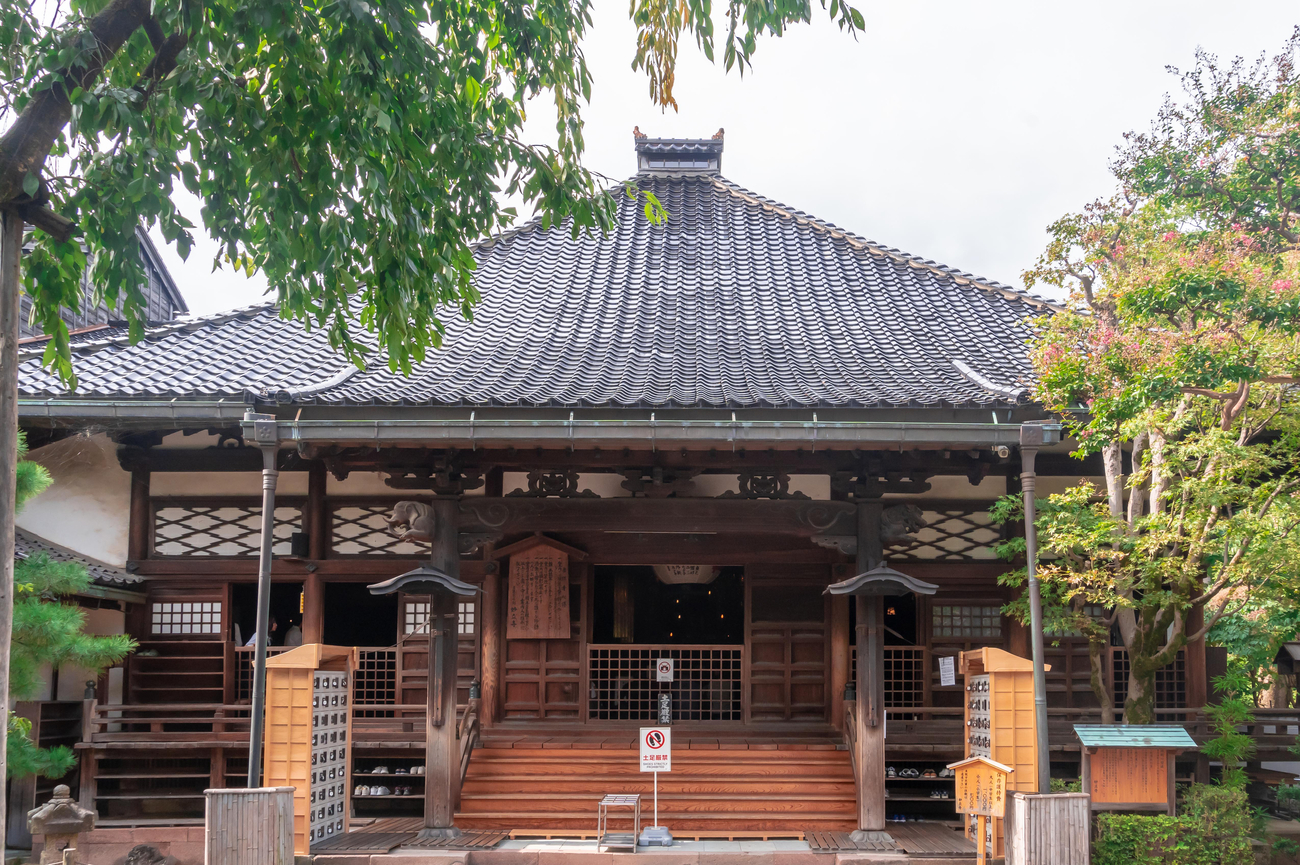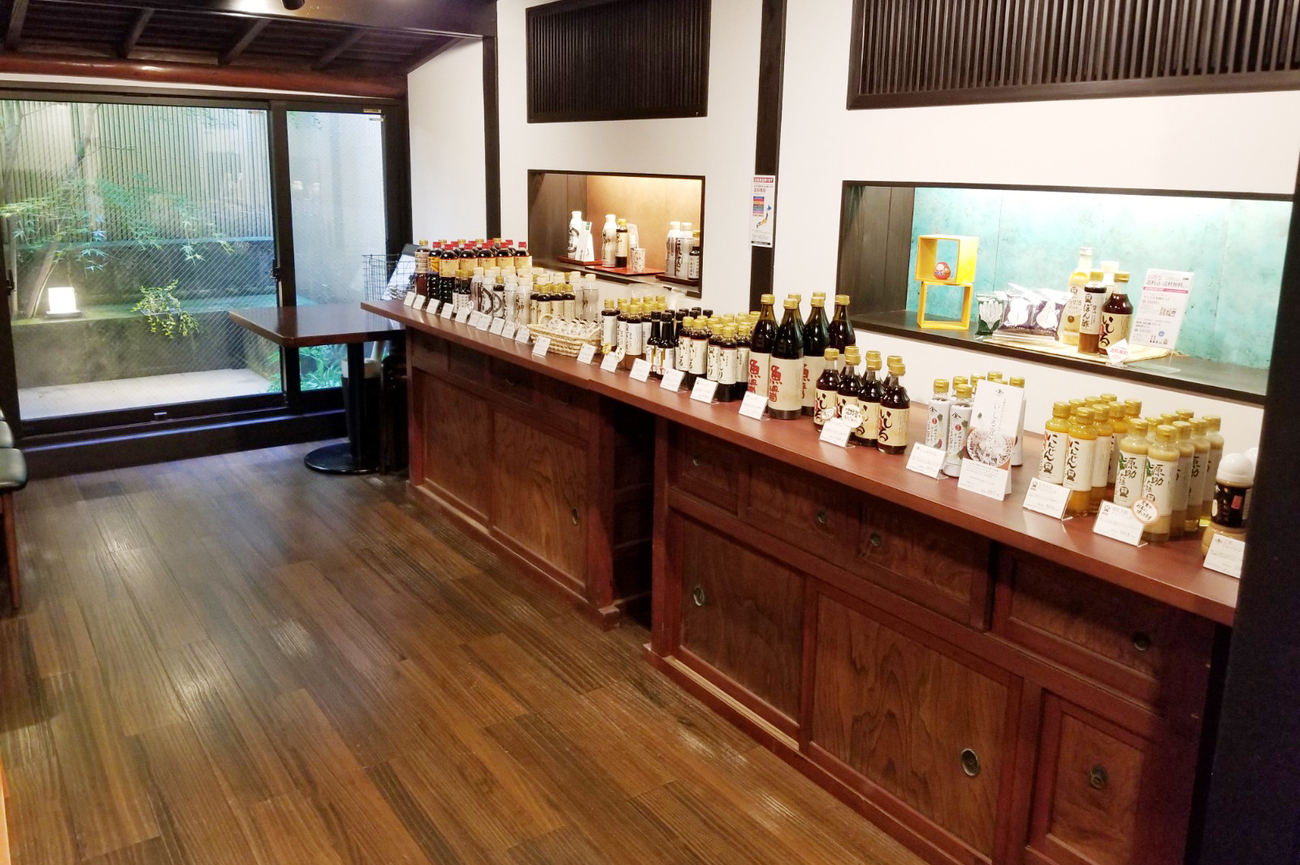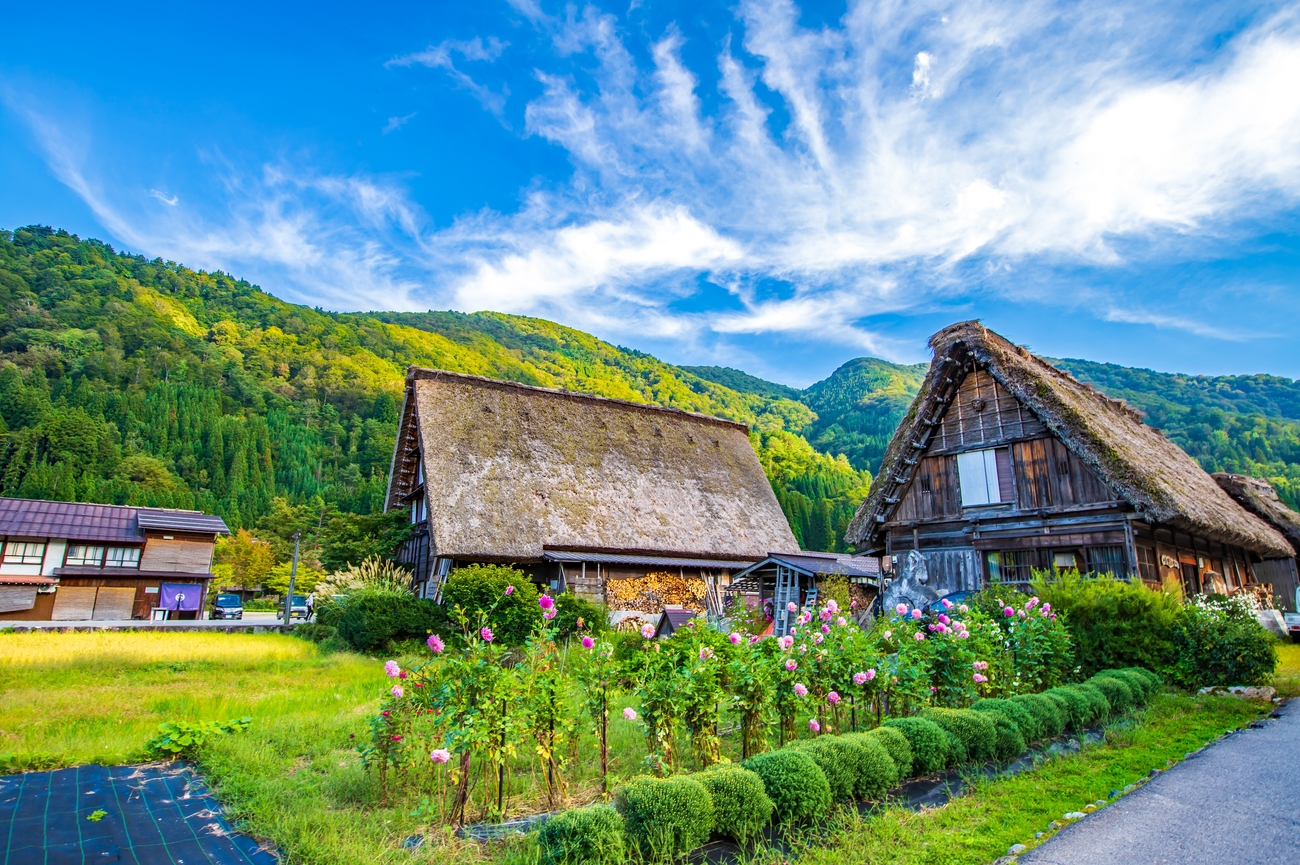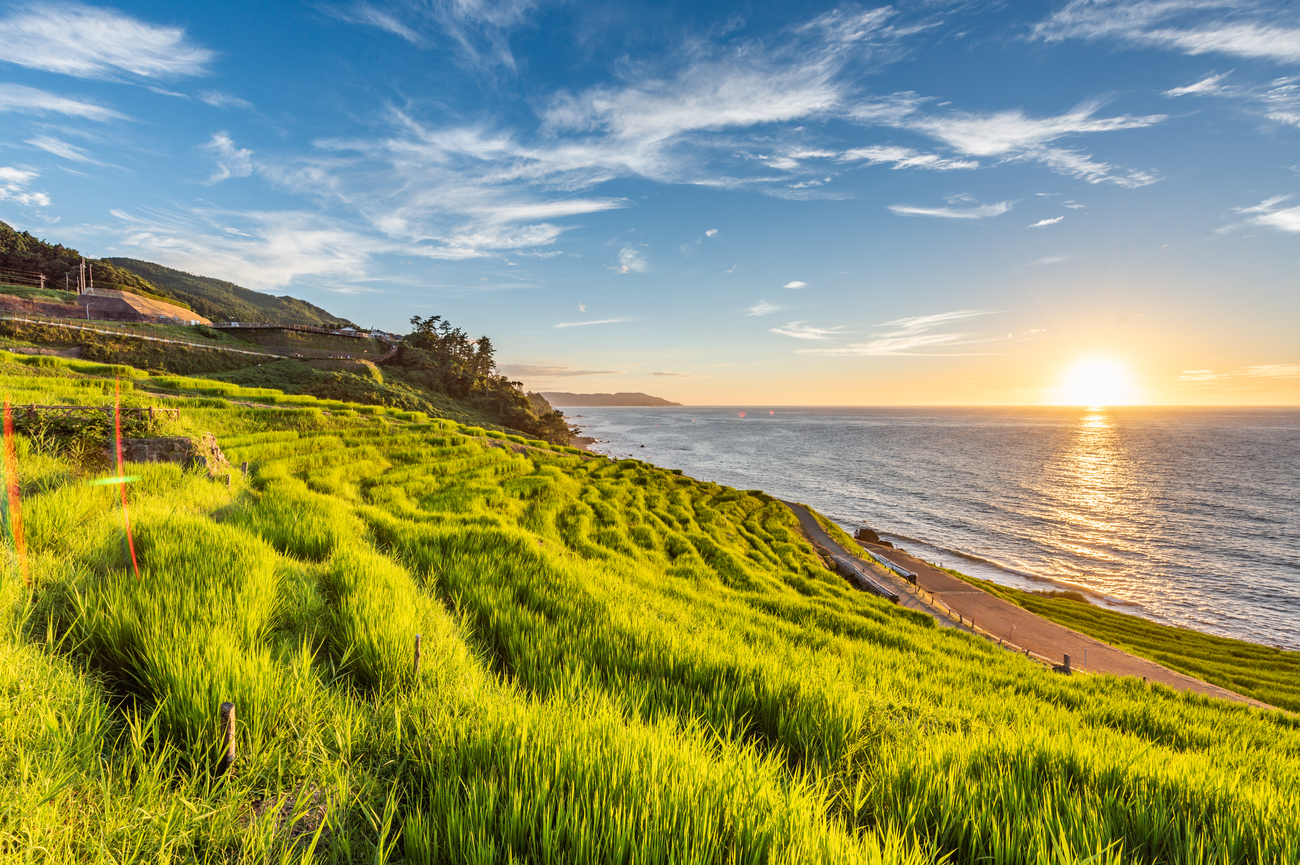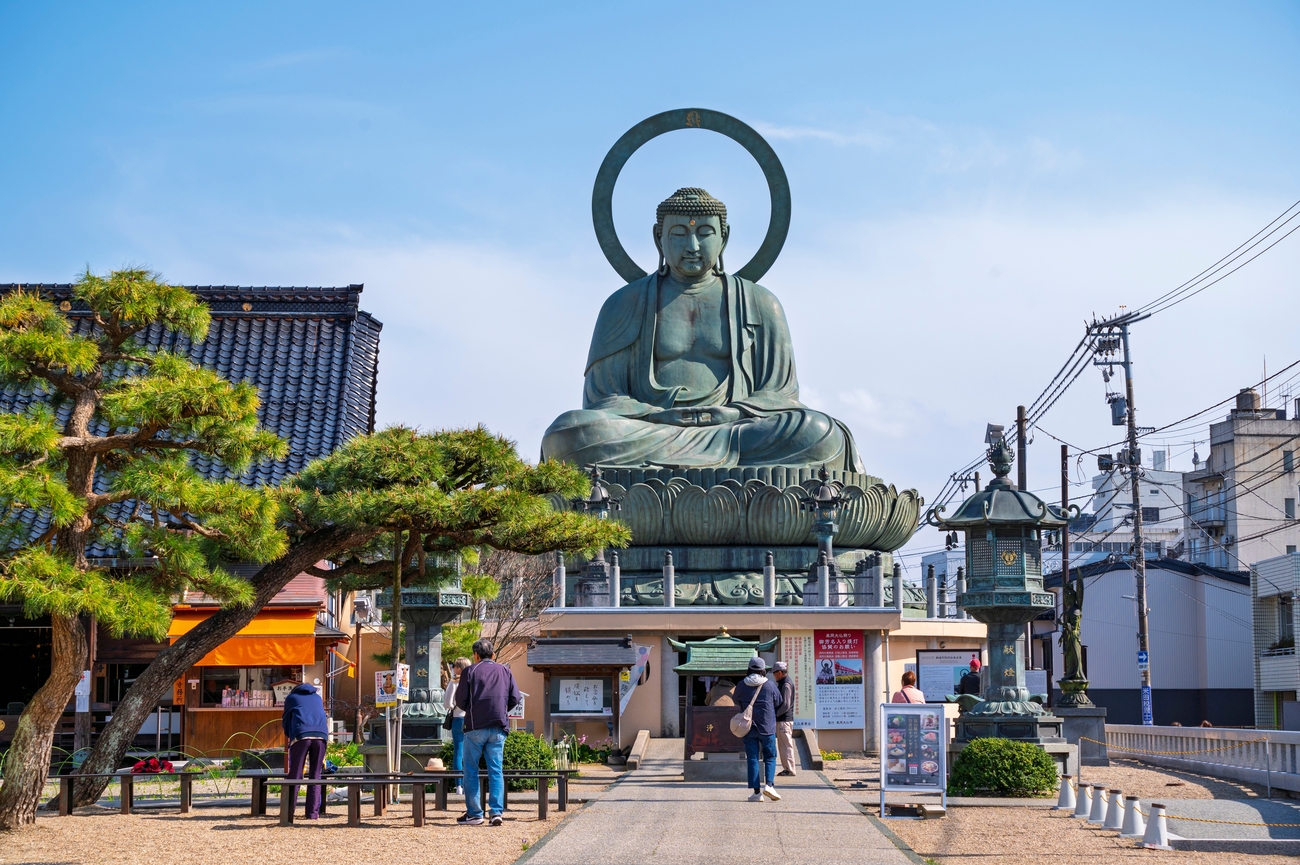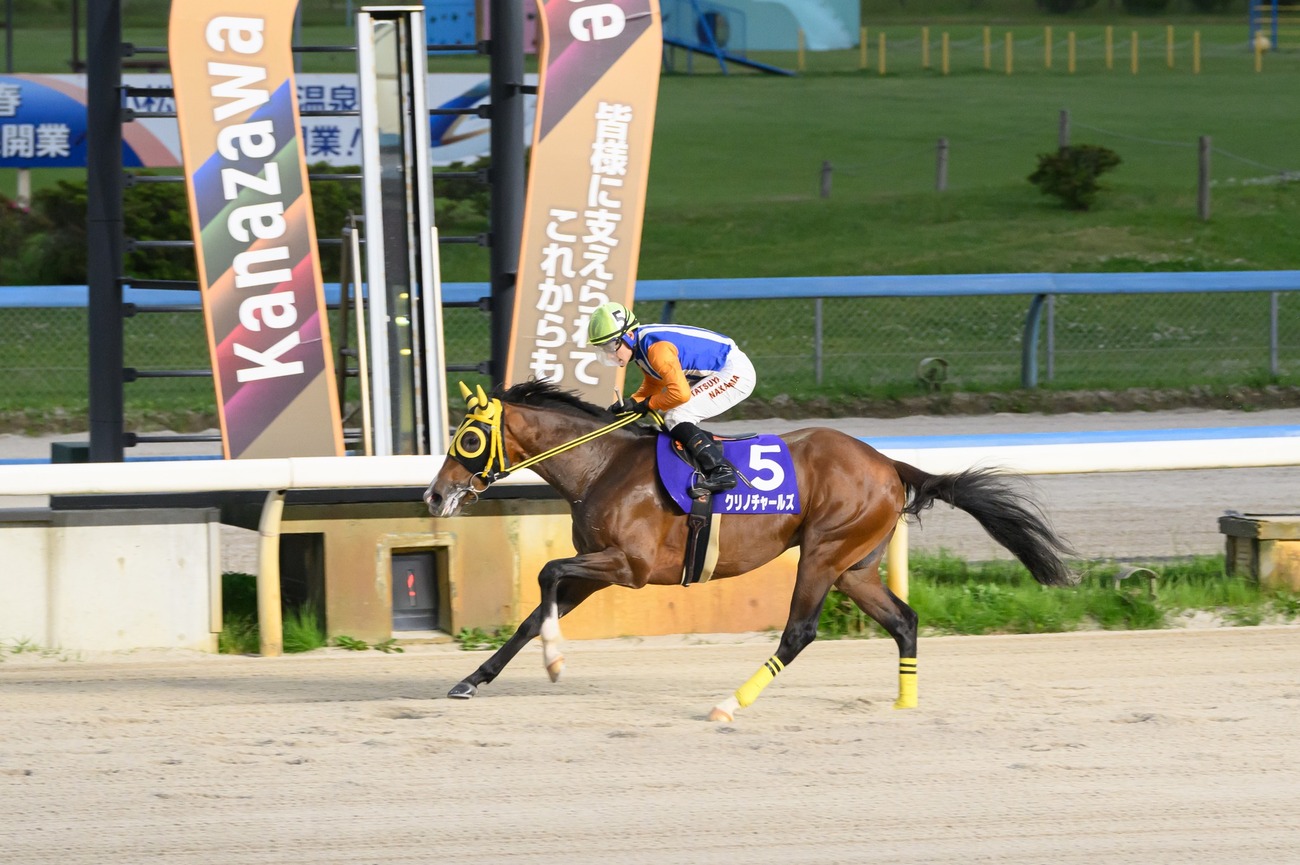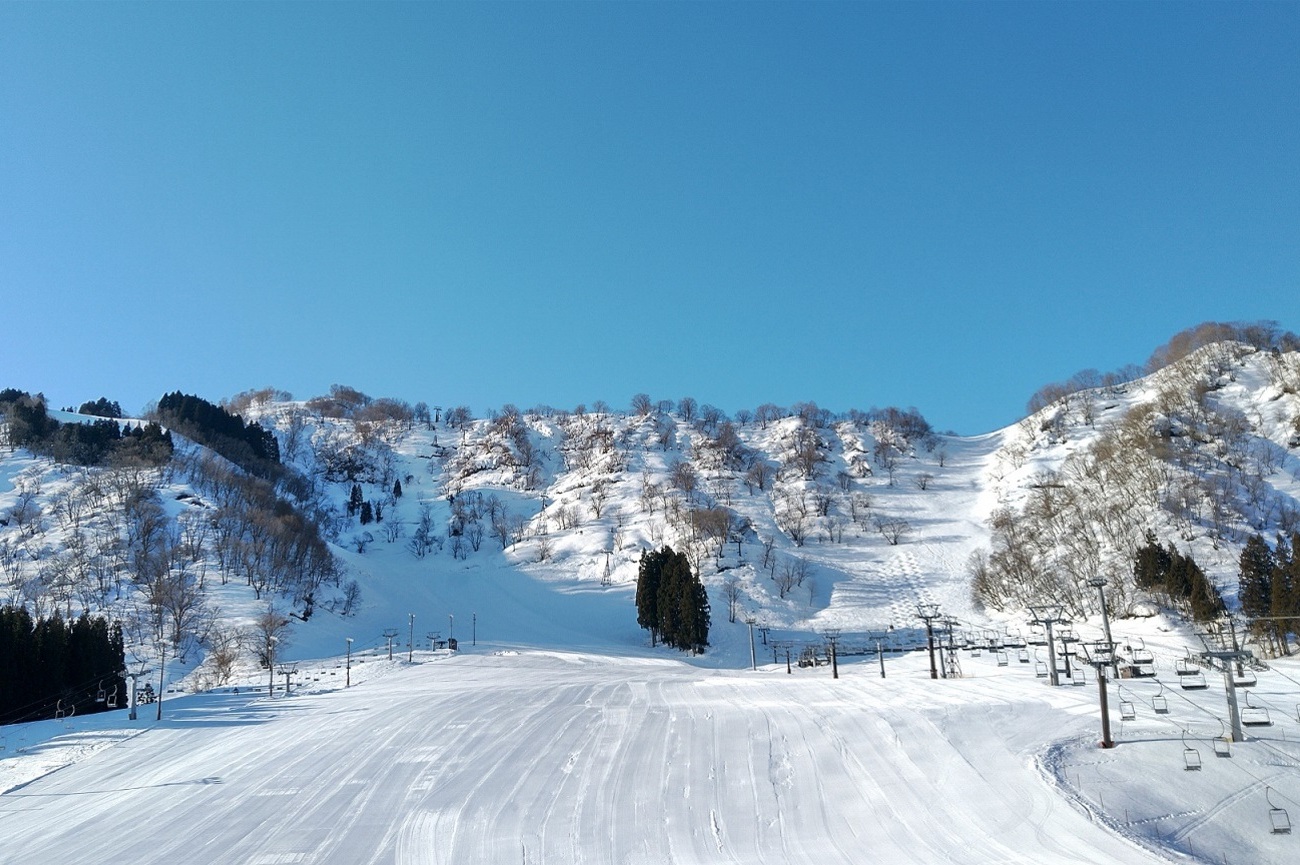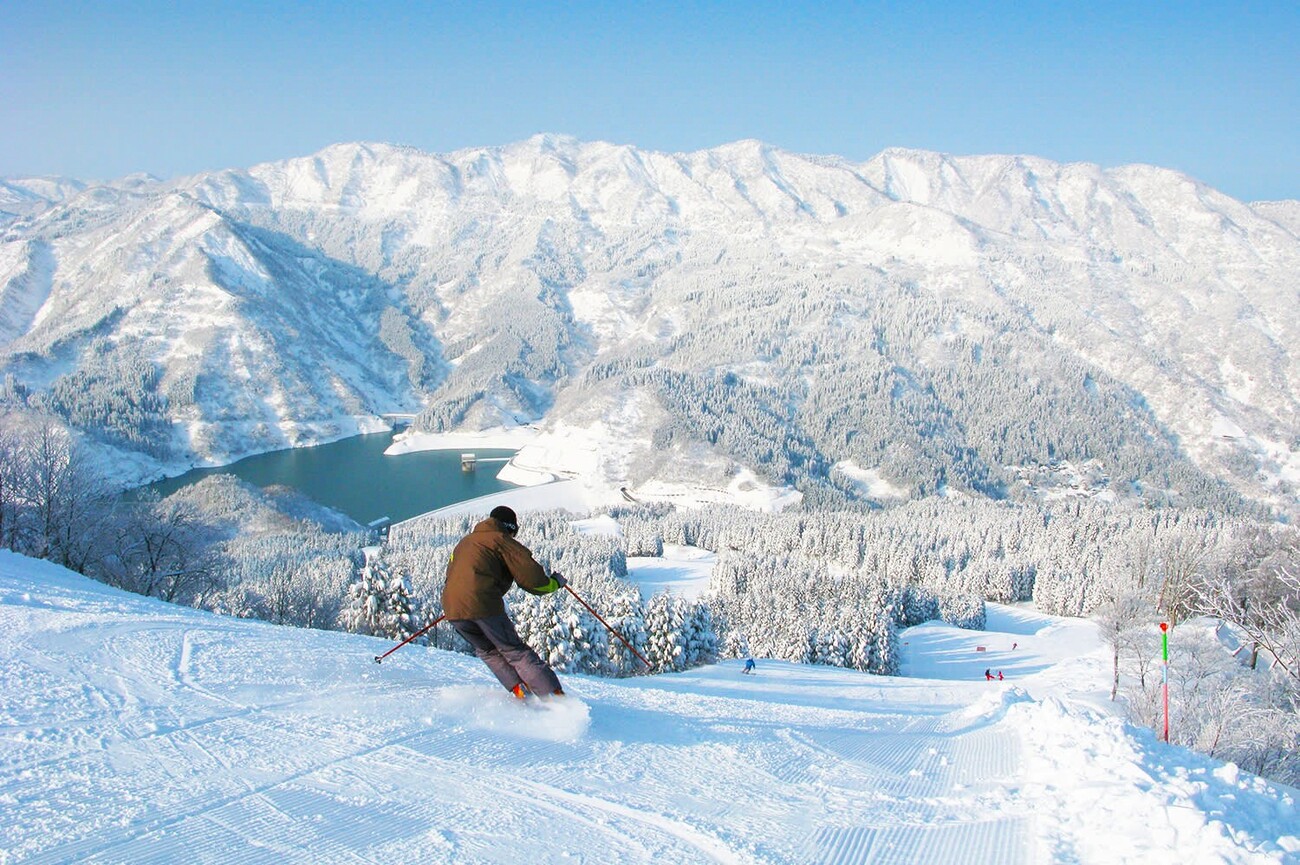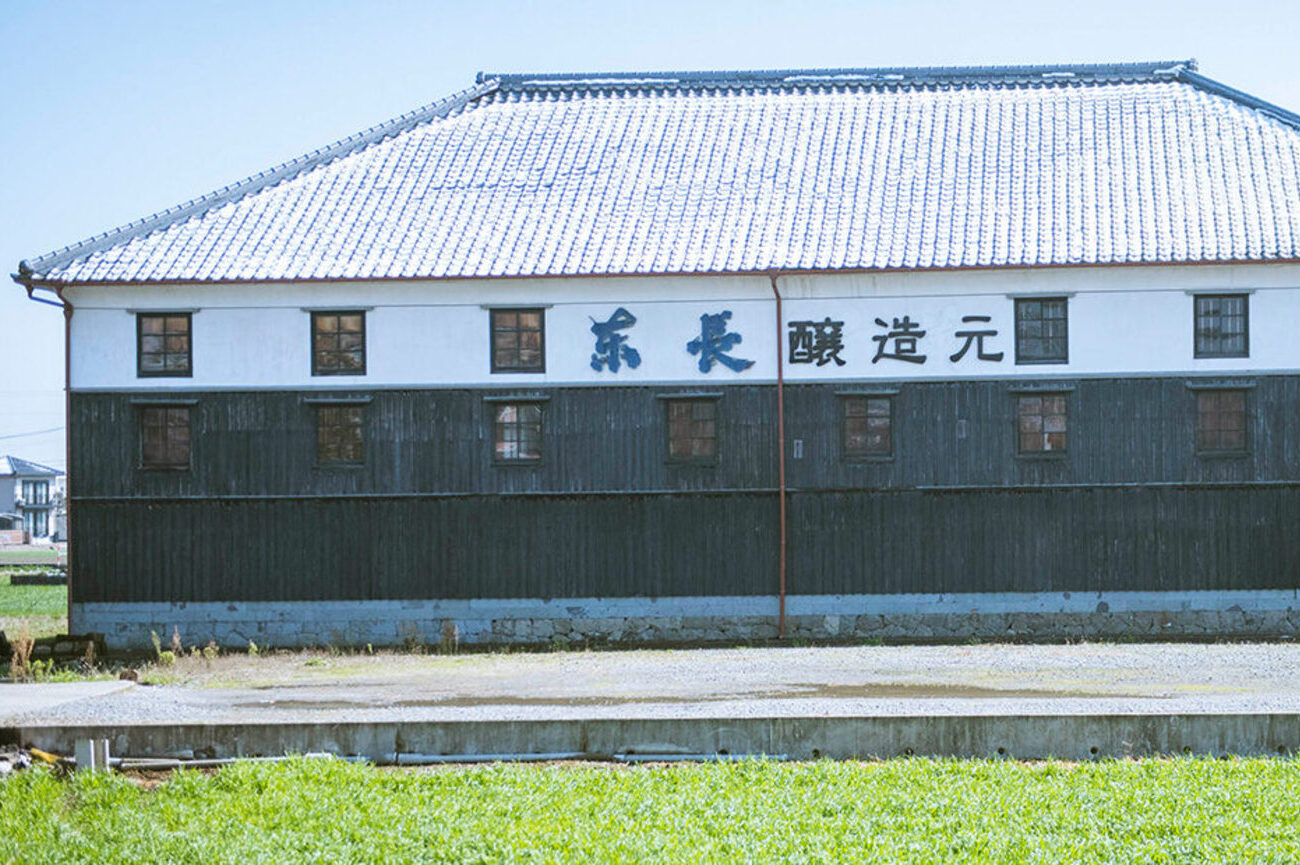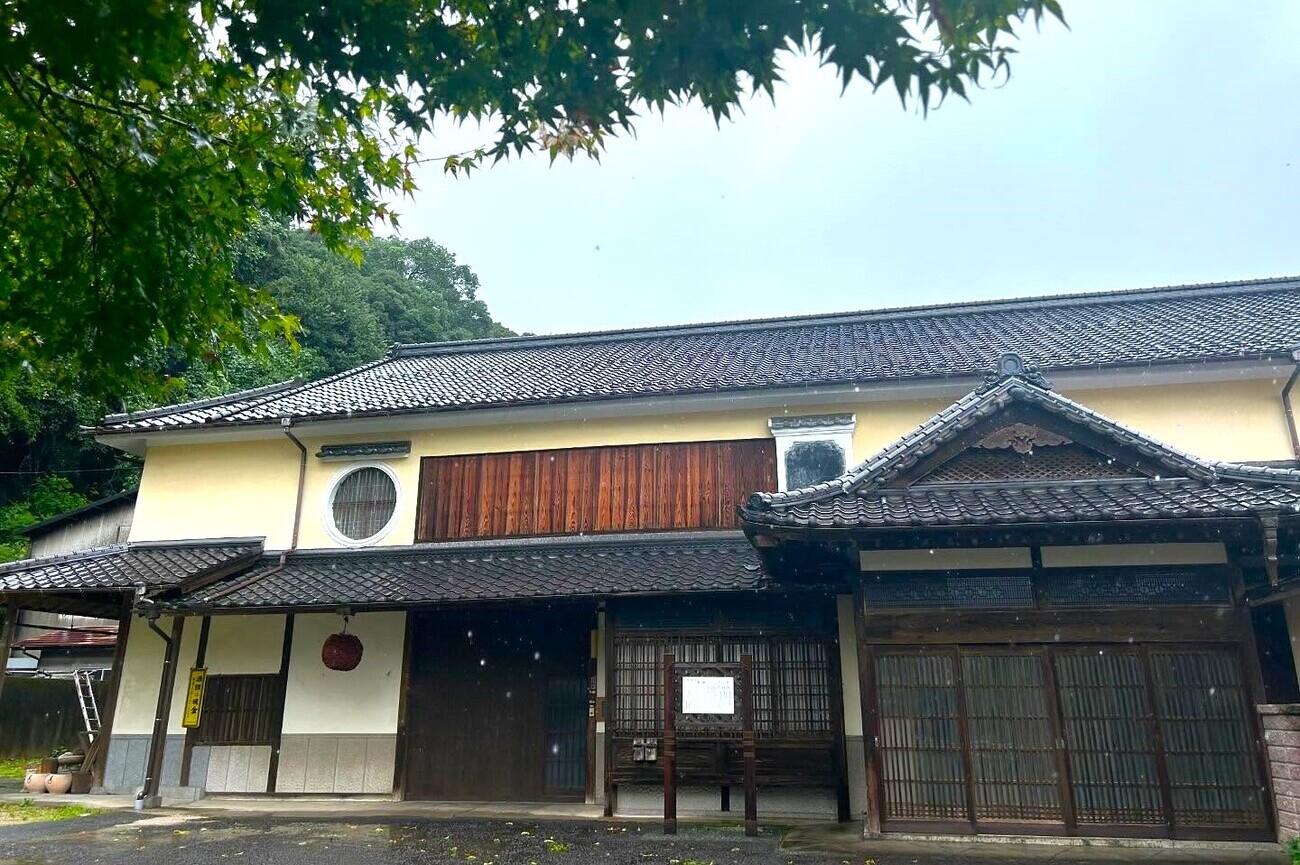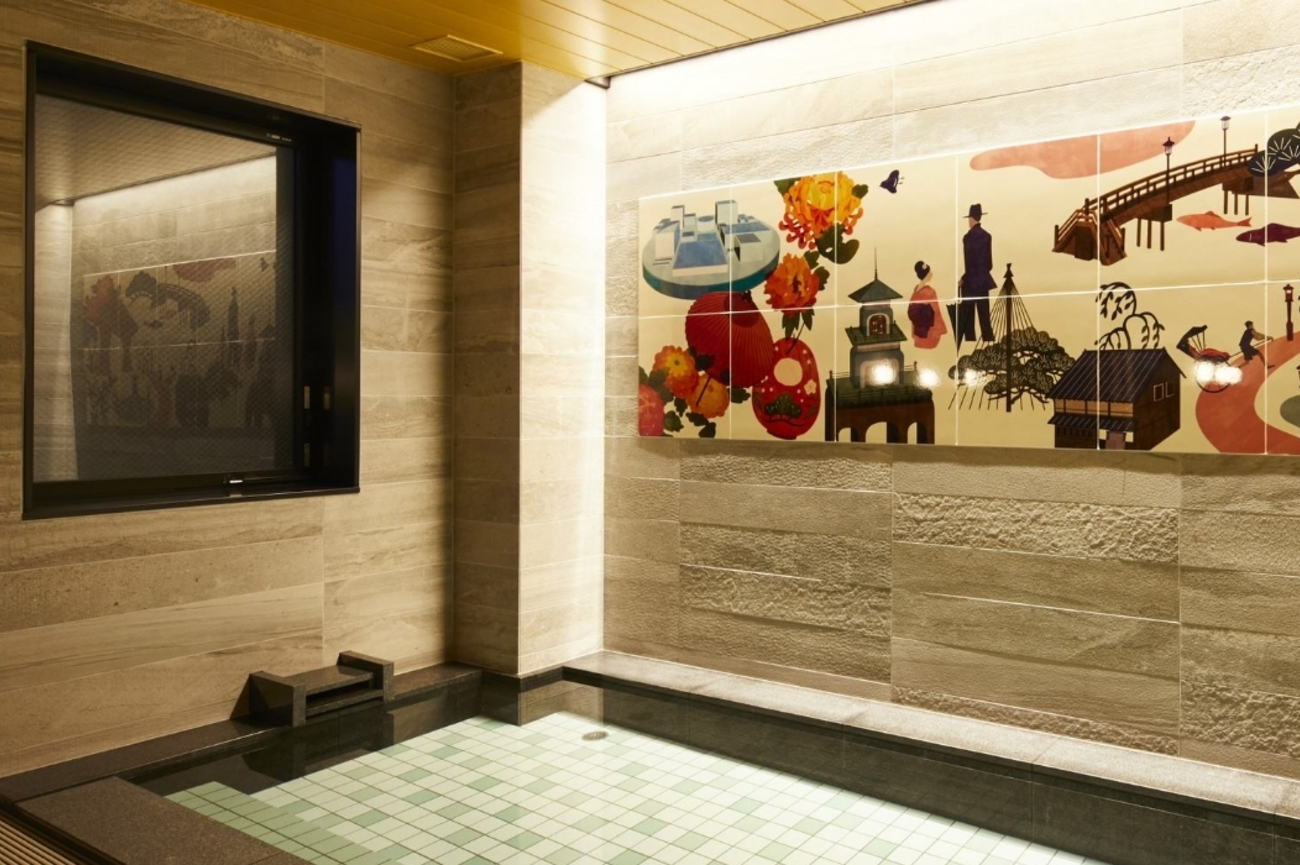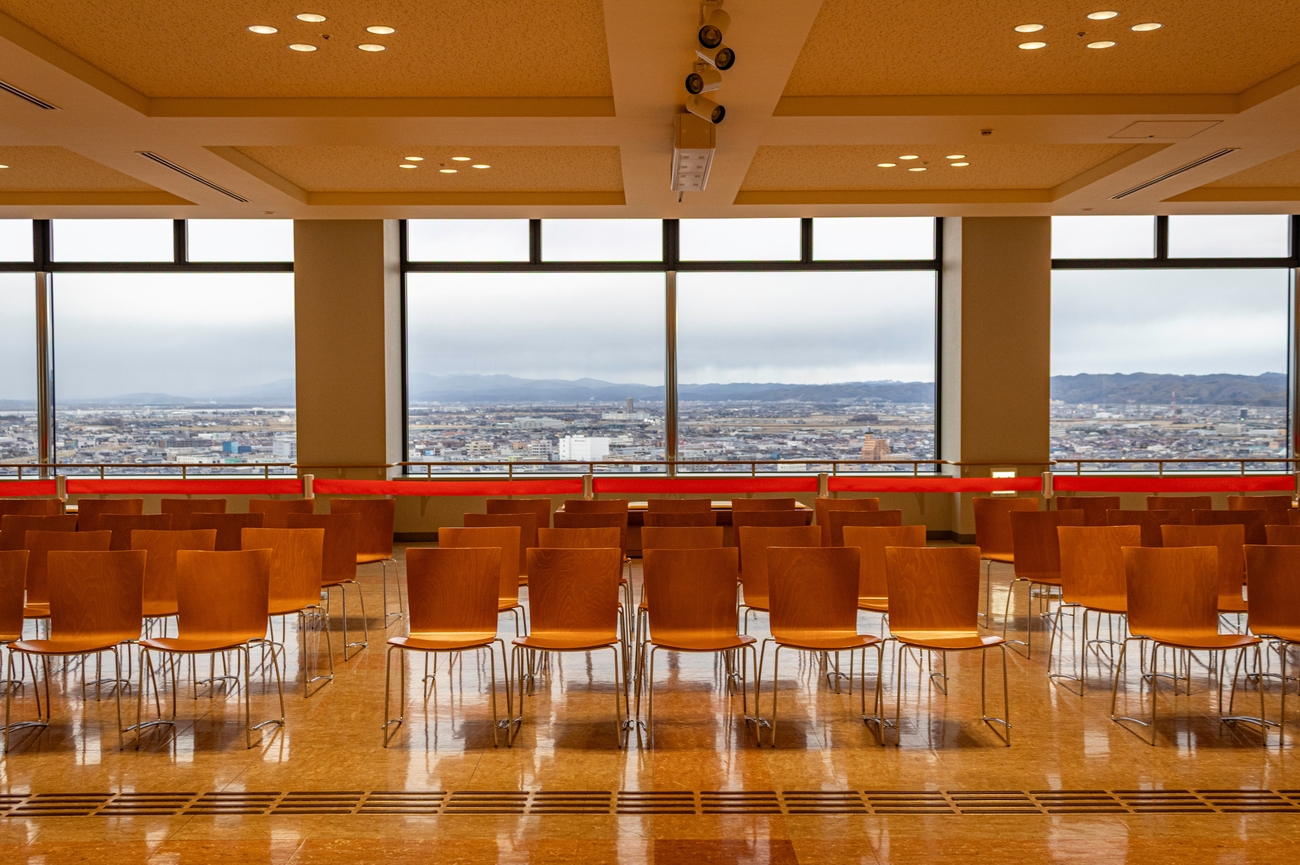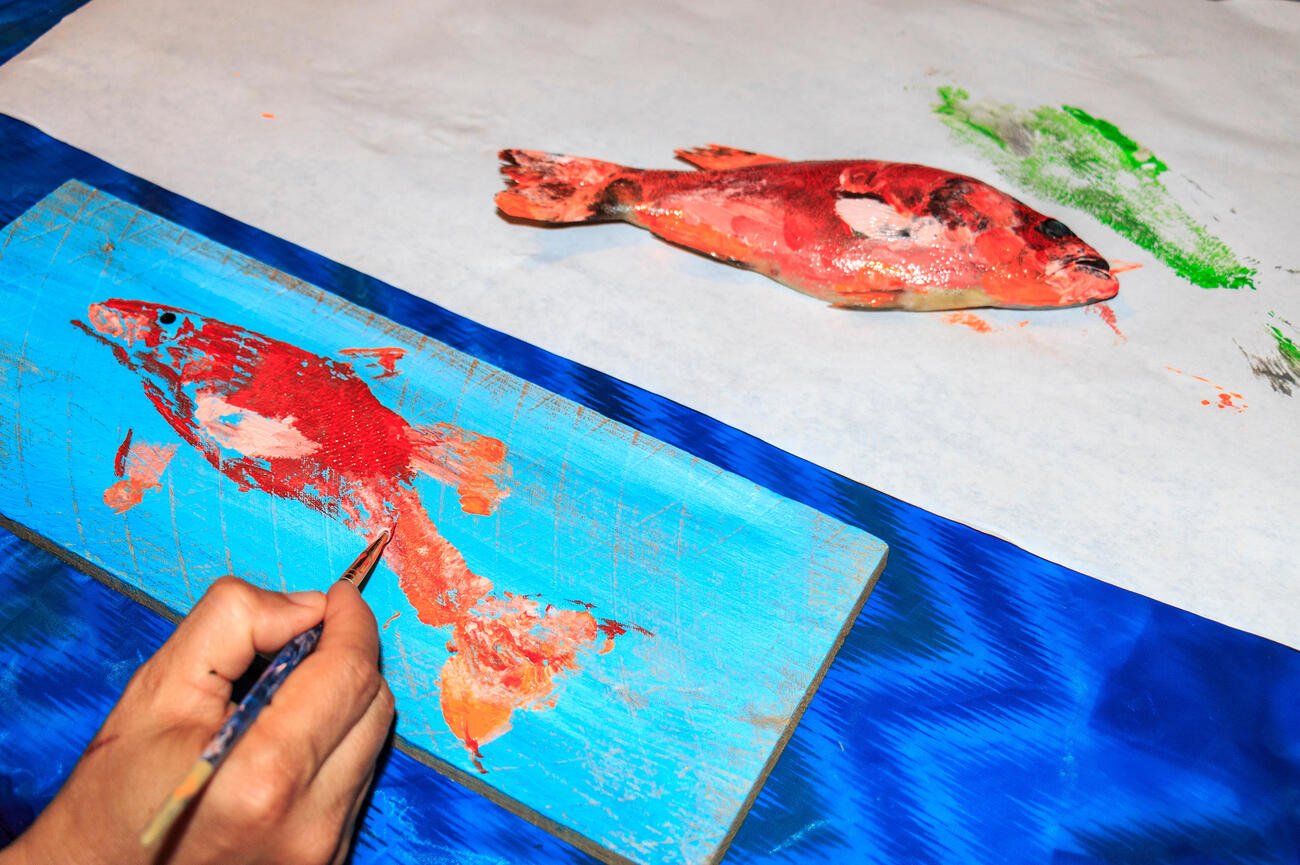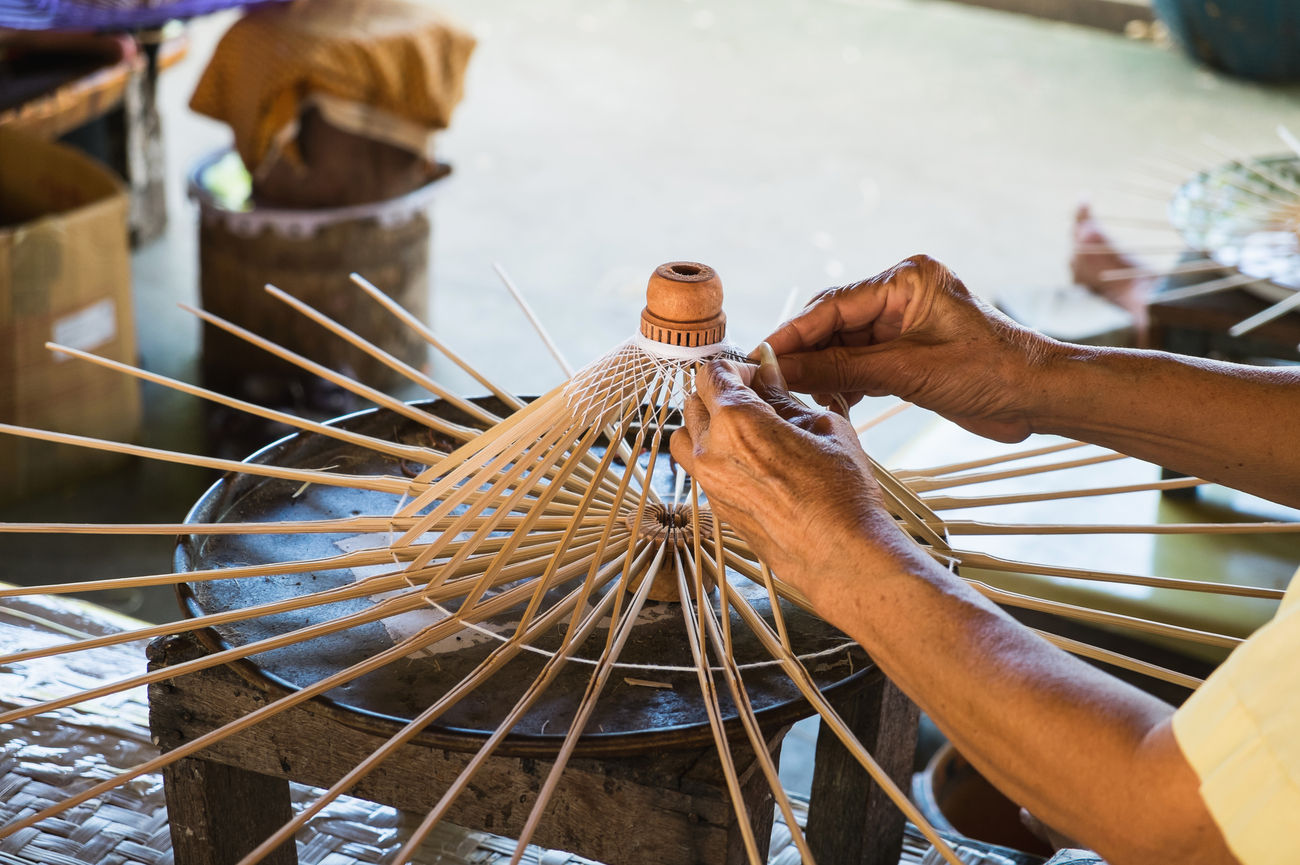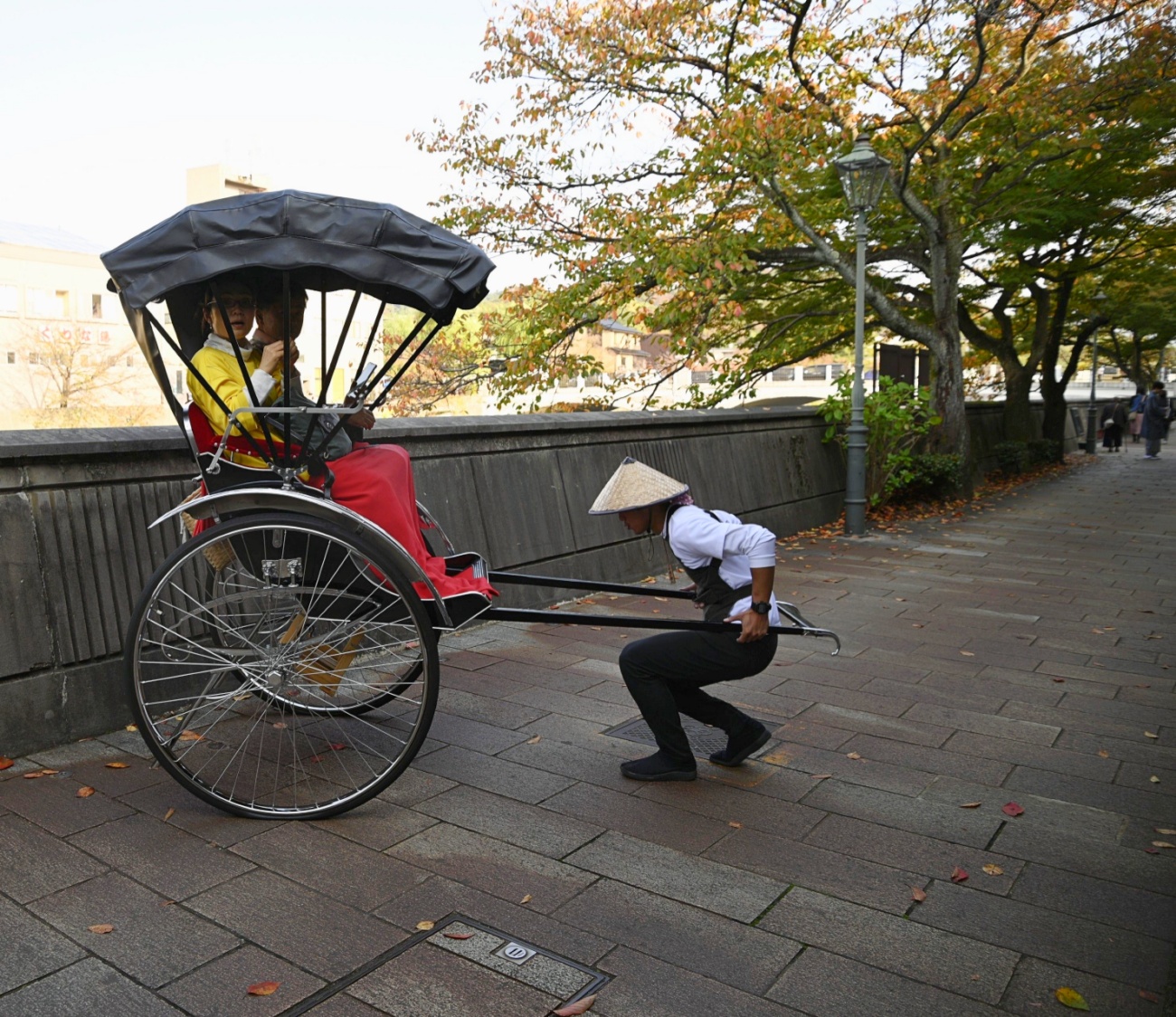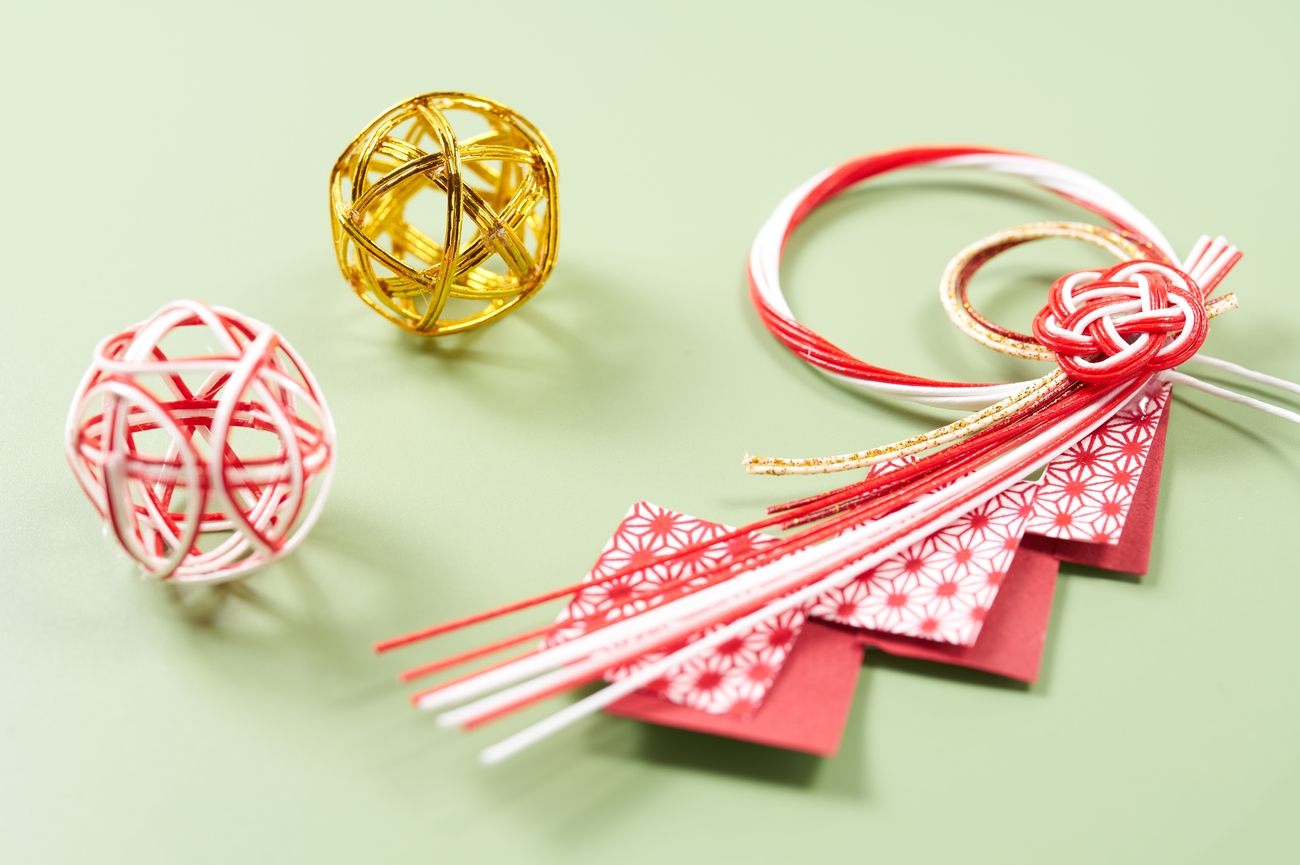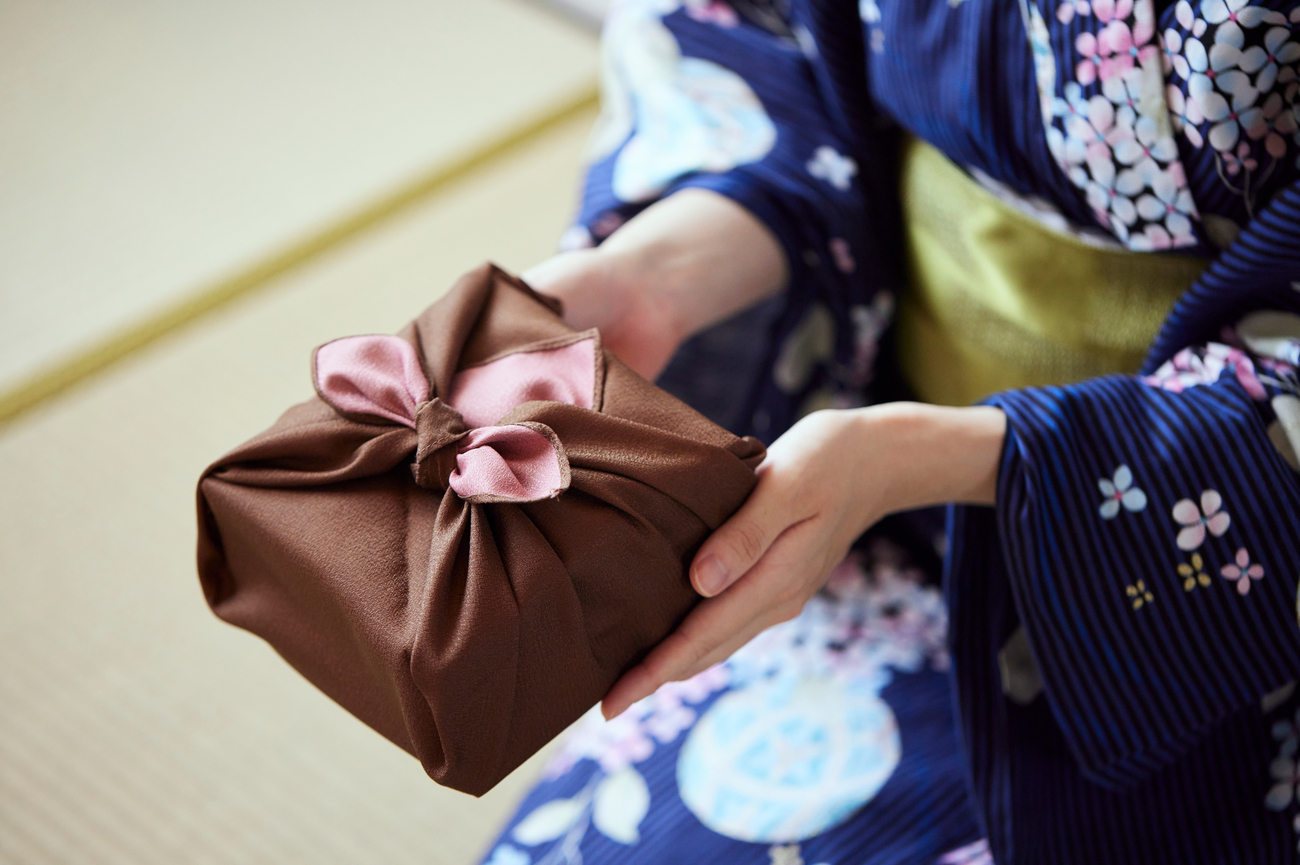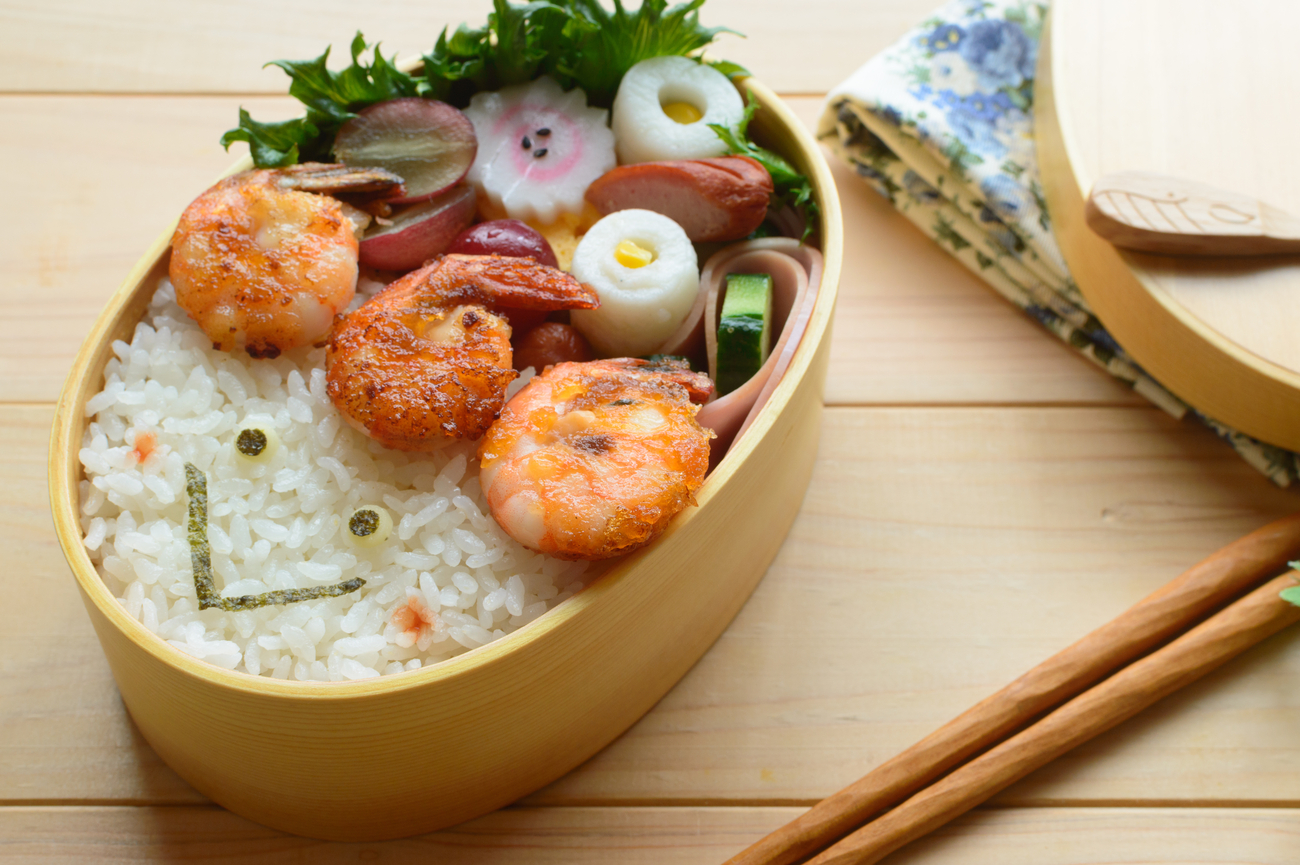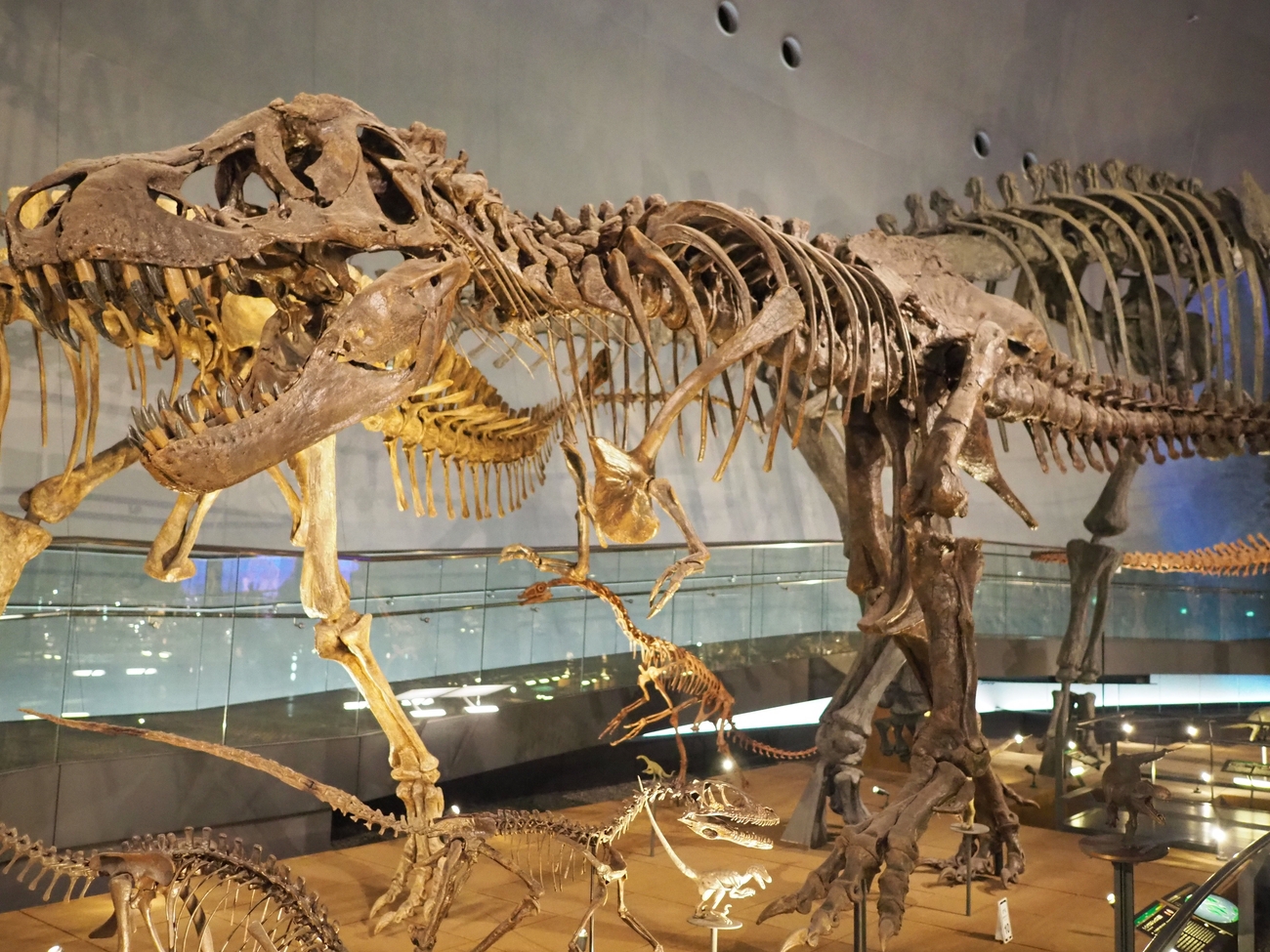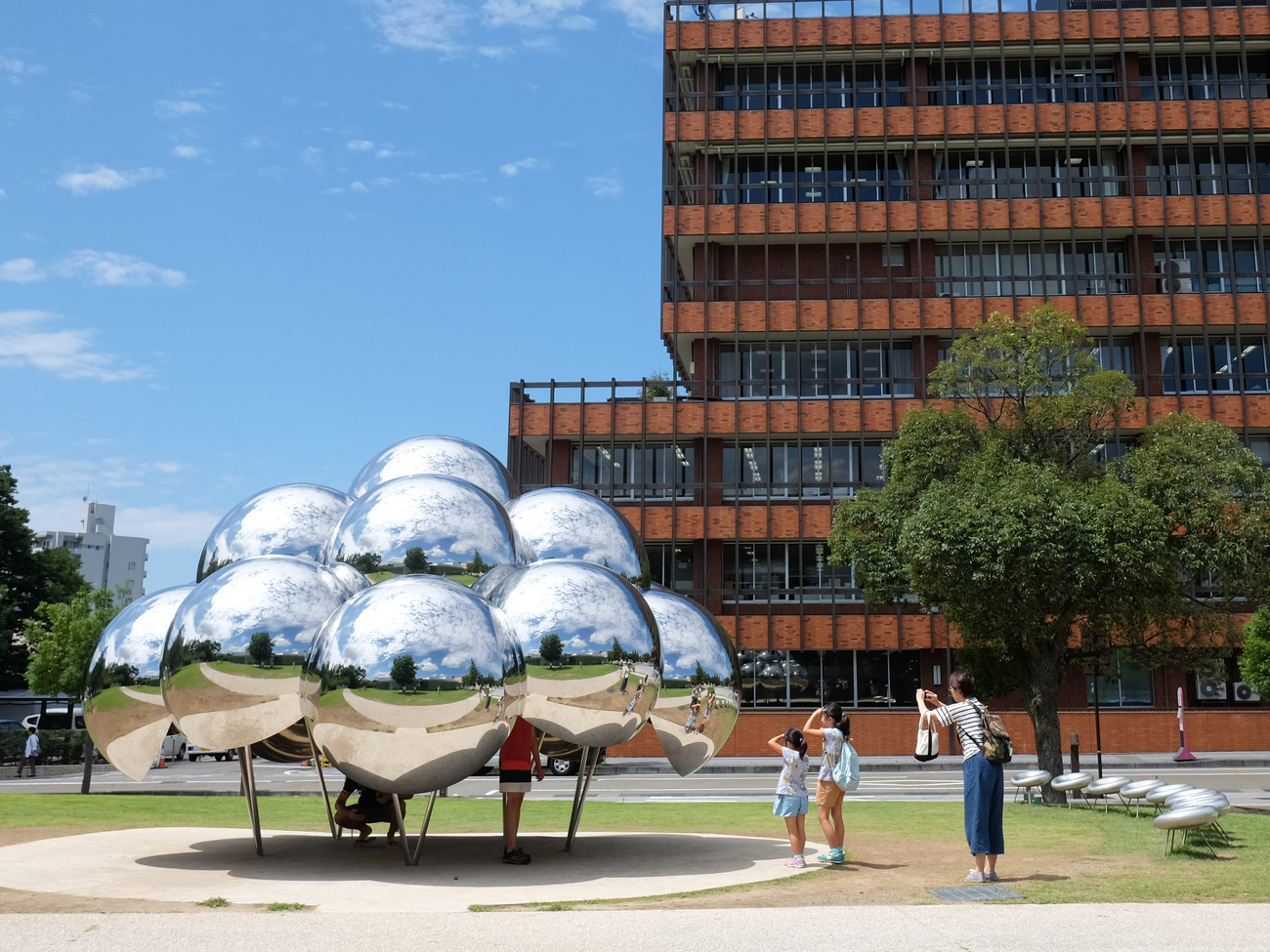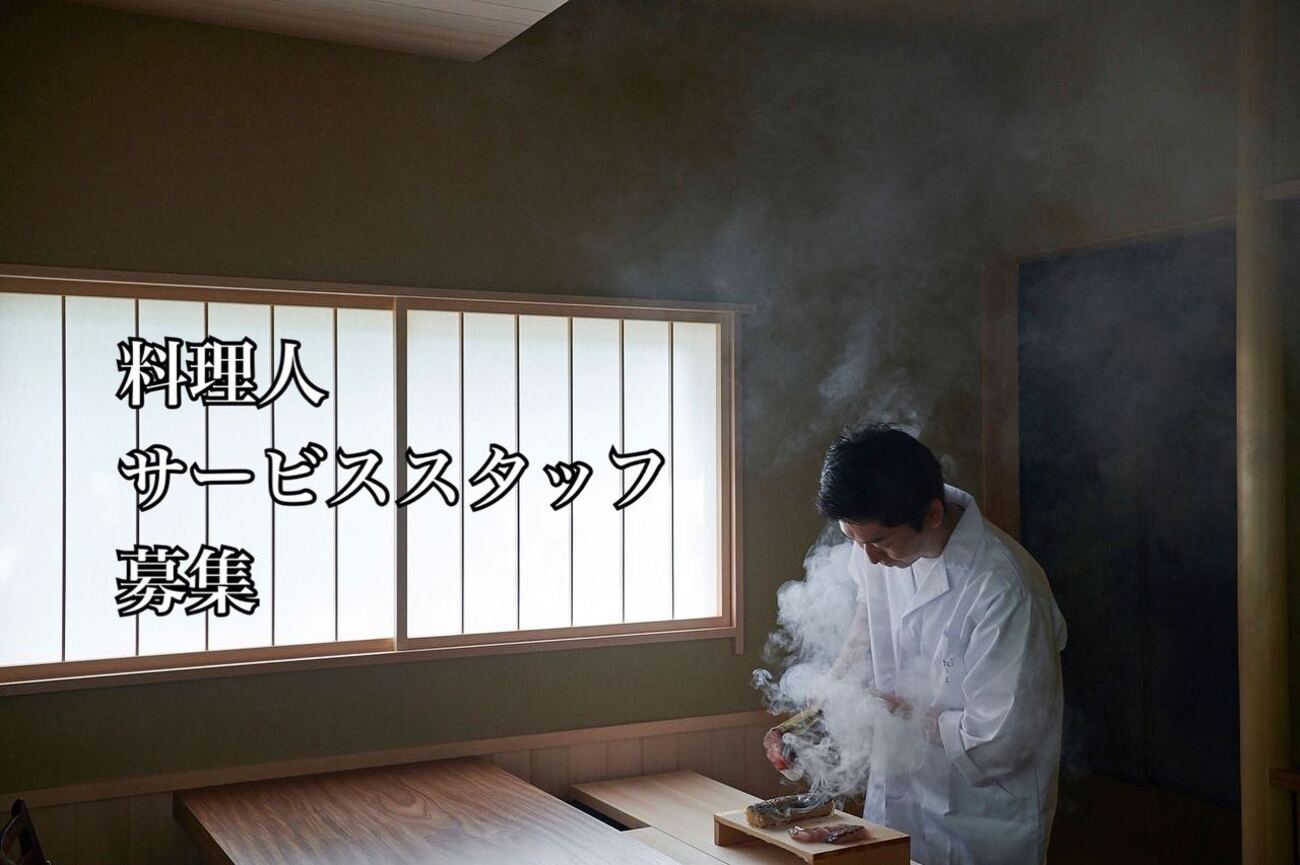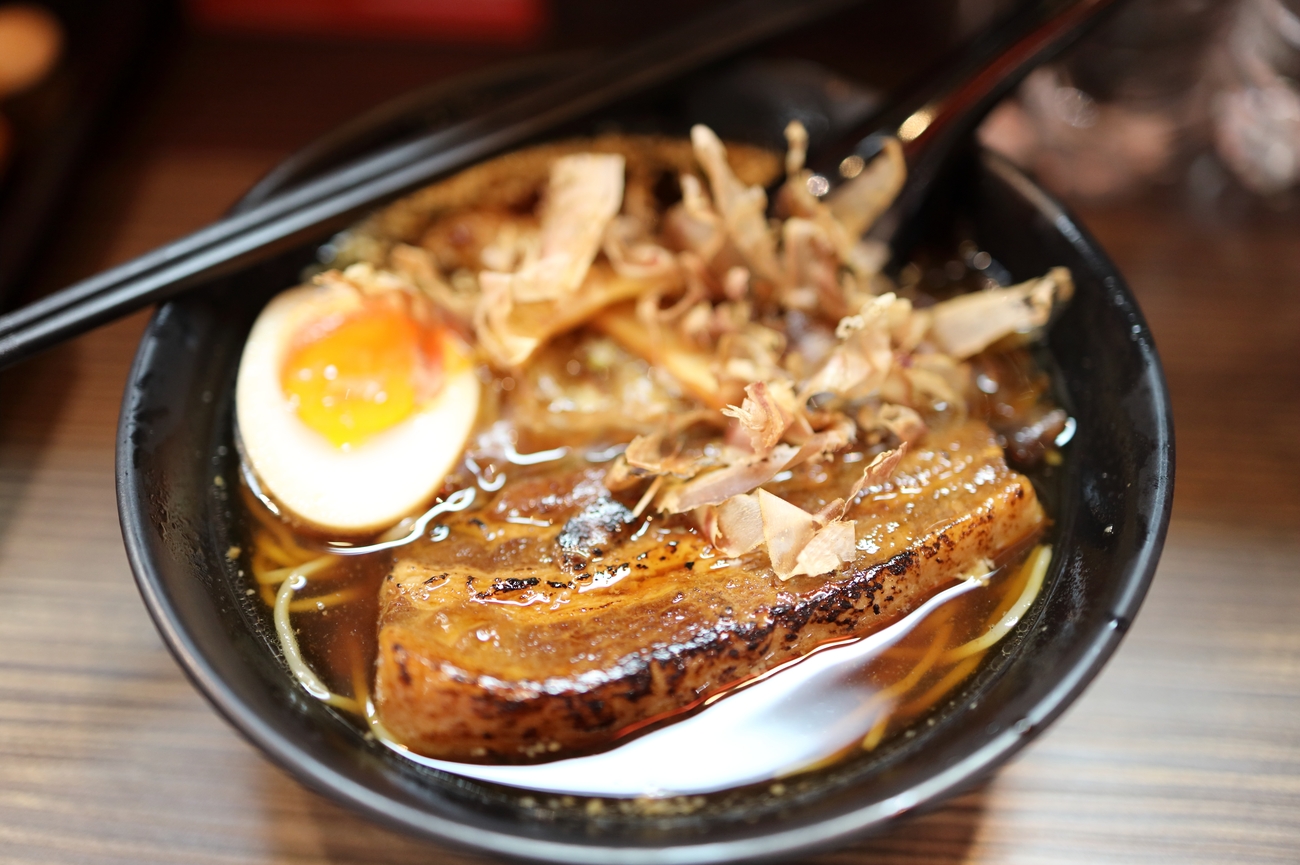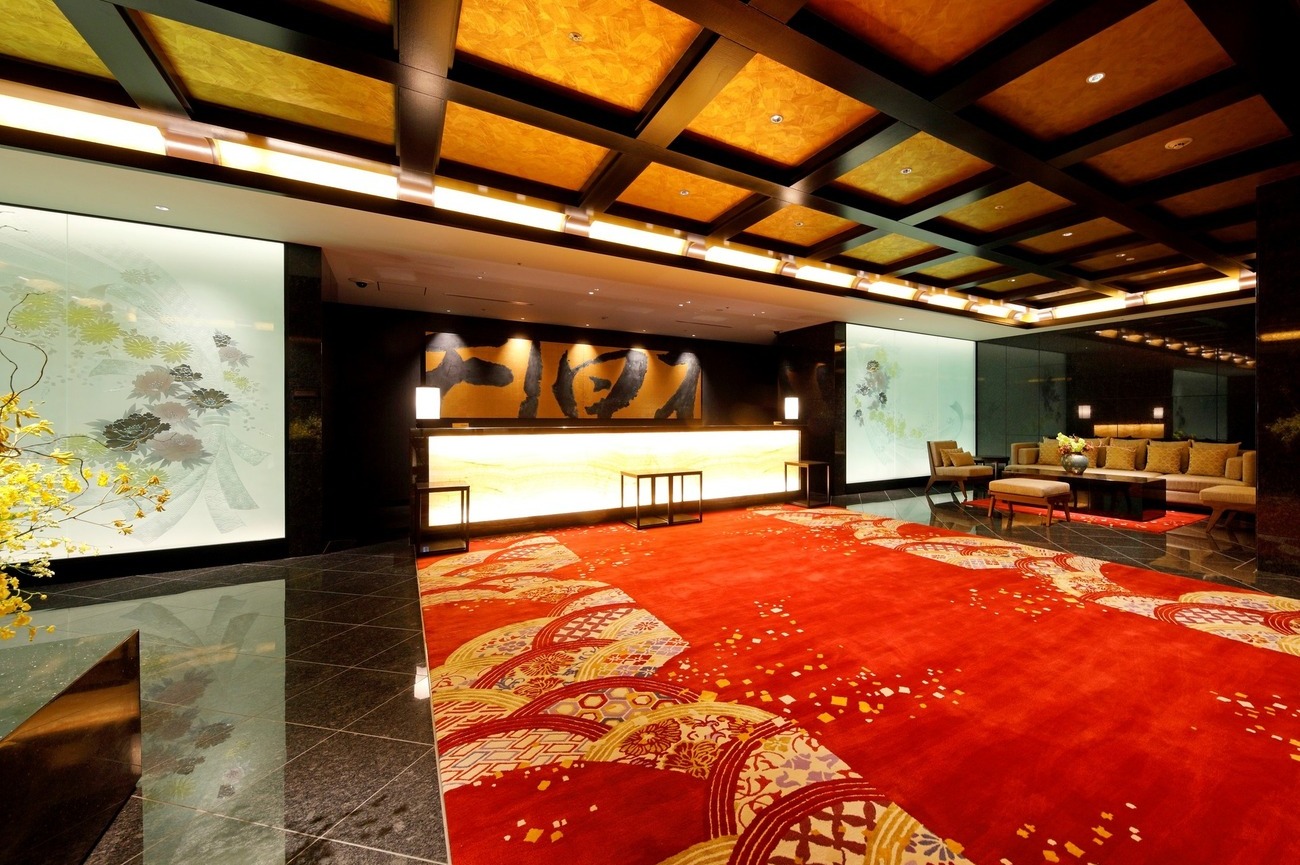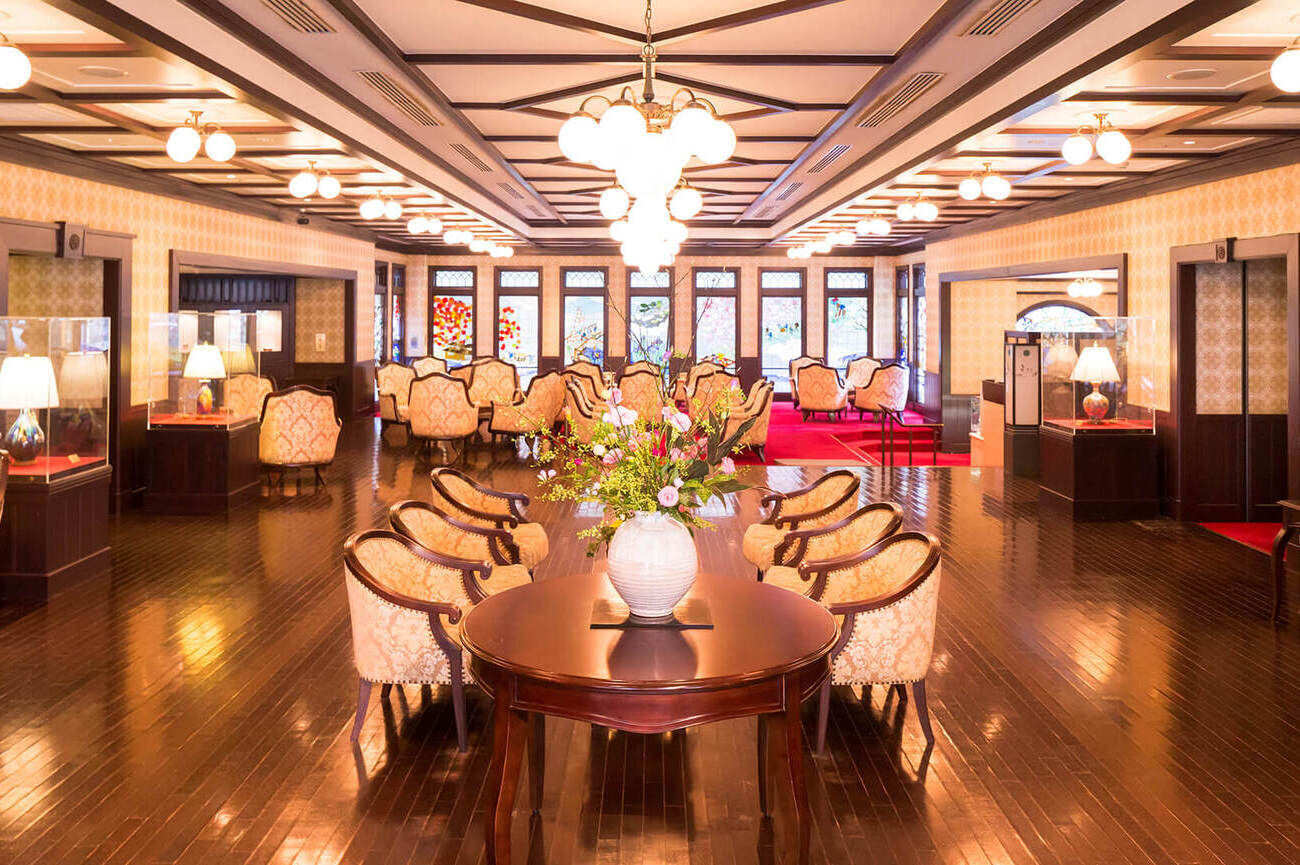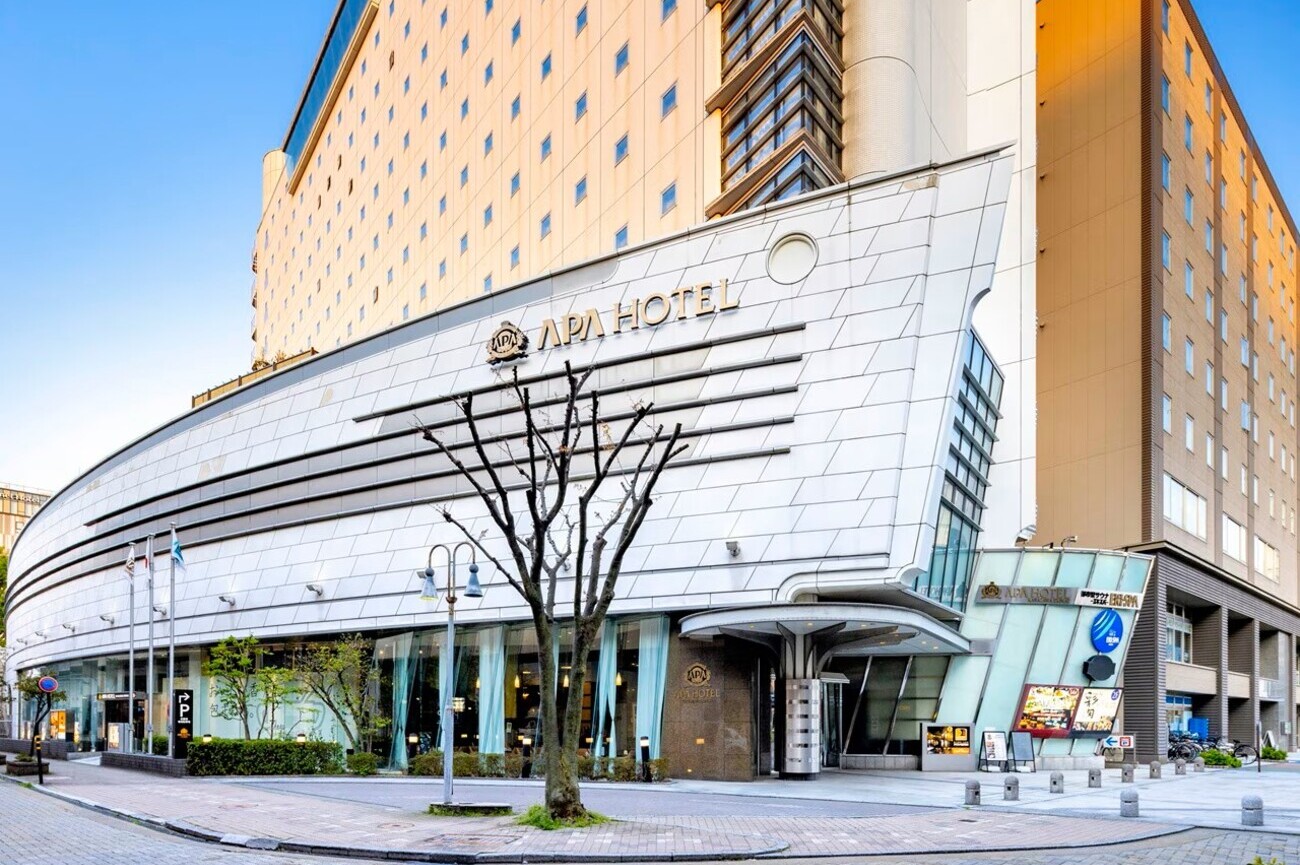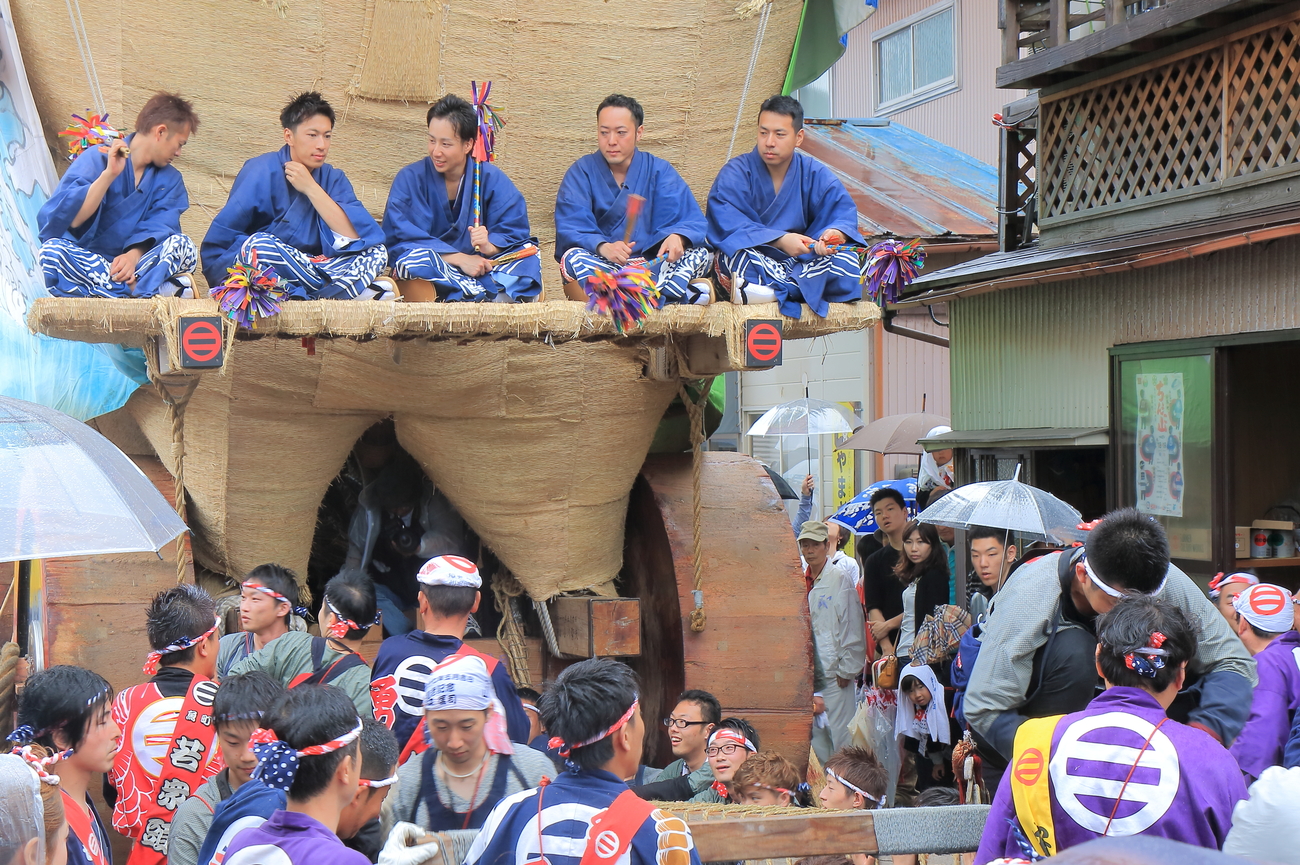Things to Do in Kanazawa: 3-Day Itinerary
Located between the Sea of Japan and the Japanese Alps, Kanazawa is a place where Edo-period traditions remain intact (not recreated) and where over 99% of Japan’s gold leaf is still handcrafted. It's home to one of Japan’s most progressive contemporary art museums where you’ll find art works that are forward-thinking yet grounded.
Kanazawa is a place for travellers who want to taste the legacy of samurai in every sip of sake, to trace the curve of tradition in a handmade umbrella, to lose track of time watching the light shift across a centuries-old temple floor.
In this three-day itinerary, we’ll guide you through Kanazawa’s history and artistic spirit beyond the well paved tourist path. Get ready to experience cultural immersions in secret gardens, UNESCO World Heritage Sites that look like they’re straight out of fiction, and artisan workshops unique to the city.
Day 1

Morning: Kanazawa Station
Begin your journey at the major railway station in Kanazawa, Kanazawa Station. Here, you’ll find the iconic wooden Tsuzumimon Gate outside the east exit, connected to a large, glass dome called Motenashi Dome. The gate is modeled after traditional Japanese drums called “tsuzumi.”
Omicho Market
Next, take a 13-minute stroll to Omicho Market, a spacious indoor market with over 180 stalls. It's a sensory feast where you can experience the local culinary culture of Kanazawa. Here, you’ll find fresh uni, plump snow crabs, seasonal fruits, and delicate wagashi (Japanese sweets). We can arrange a counter-side breakfast at Iki Iki Tei and enjoy some of the freshest sea urchin, oyster sashimi, and grilled fish.
Day 1, Morning - Kanazawa Tour Map
Afternoon: Kanazawa Castle
Once home to the mighty Maeda clan, Kanazawa Castle is an essential part of Kanazawa's history. Look closely at the stone walls, you’ll see different sections bear different patterns, each one a signature of the samurai-era masons. Many features of the castle including the original castle tower were destroyed in two major fires over its long history, and many of them have been rebuilt. Two of its longest lasting features are the Ishikawa-mon Gate, which was rebuilt in 1788, and the Sanjikken Nagaya which was rebuilt in 1858.
Gyokuseninmaru Garden
Just behind the castle walls lies the historic Japanese garden, Gyokuseninmaru Garden. It’s named after the wife of the second lord of the Kaga domain, (present-day Ishikawa). Inside, there’s a teahouse overlooking the garden, it offers tea and traditional sweets.
Oyama Shrine
Wrap up your afternoon at Oyama Shrine. Known for its Dutch-influenced gate and stained-glass windows, a rare design for a traditional Shinto architecture. The shrine was built in 1599 on Mount Utatsu by the successor of the first lord of the powerful, Maeda Toshiie, of the Maeda clan. It was later moved to its present-day location. The shrine’s gate was designed by a Dutch architect, using elements of European and Asian religious themes.
Day 1, Afternoon - Kanazawa Tour Map
Day 2

Morning: Kenroku-en Garden
Start your day with a nice morning stroll at Kanazawa's crown jewel, Kenroku-en. Labeled as one of only 3 ‘perfect gardens’ in Japan, Kenroku-en garden is designed to be beautiful in every season. Its name means “Garden of Six Qualities,” referring to the ideal characteristics of a perfect landscape: spaciousness, seclusion, artificiality, antiquity, abundant water, and scenic views.
Kanazawa Shrine
Located right next to Kenroku-en garden is a small Shinto shrine often overlooked by most tourists, Kanazawa shrine. The shrine was built in 1794 to protect Kenrokuen Garden and is dedicated to the ancestors of the Maeda family.
21st Century Museum of Contemporary Art
From Kanazawa Shrine, take a 6-minute walk to one of Japan’s most popular art museums, the 21st Century Museum of Contemporary Art. The museum was designed with no facade or main entrance so visitors can enter from any of its several entry points, this is to encourage visitors to approach the museum (and its art) from more than one direction. The museum features works of contemporary artists from Japan and all over the world. Explore world-class installations such as Leandro Erlich’s Swimming Pool (where you can walk “underwater”) and the kaleidoscopic “Blue Planet Sky” by James Turrell.
Day 2, Morning - Kanazawa Tour Map
Afternoon: D.T. Suzuki Museum
A museum dedicated to D.T. Suzuki or Daisetz Suzuki, one of Japan’s most famous Buddhist philosophers whose teachings greatly influenced the spreading of Buddhist philosophy to the west of Japan. The museum is located where D.T. Suzuki was born and comprises three wings: the Entrance Wing, the Exhibition Space Wing and the Contemplative Space Wing.
Nagamachi Buke Yashiki District
Next, take a 9-minute drive to Nagamachi Buke Yashiki District, a village featuring cobblestone streets and former samurai homes, it’s where middle to high-ranking samurais used to live during the Edo period. Its population grew to over 100,000 making it into one of the largest castle towns in feudal Japan. The atmosphere here feels like it’s frozen in time.
Nomura-ke Samurai Heritage Residence
After a nice, reflective stroll along the streets of Nagamachi, let’s visit a samurai house. This samurai residence is the former estate of 11 generations of an upper-middle-rank samurai family, belonging to the Nomura family. The family served as high-ranking retainers of the powerful Maeda clan during the Edo period. Their residence is one of the few that survived during the Meiji Restoration. Inside, you’ll find interior decorations with original samurai armor, katana swords, and various household artifacts from the period.
Day 2, Afternoon - Kanazawa Tour Map
Day 3

Morning: Higashi Chaya District
Step into old-world Kanazawa where you’ll find wooden facades, latticed teahouses, and narrow stone alleys. Kanazawa has three, well preserved chaya (or teahouse) districts: Higashi Chayagai, Nishi Chayagai, and Kazuemachi. The Higashi Chaya District is the largest and houses two chayas: one (Shima Teahouse) was converted into a museum, the other (Kaikaro Teahouse) is still operating. The district also features a gold leaf store where you can shop gold leaf products as well as enjoy a private tea ceremony.
Yasue Gold Leaf Museum
Next, take a 5-minute walk to a museum dedicated to one of Kanazawa’s signature crafts: gold leaf. Over 99% of Japan’s gold leaf comes from Kanazawa, and here, you’ll learn how artisans beat metal into sheets thinner than a human hair. You may also watch live demonstrations and admire gold-gilded lacquerware.
Day 3, Morning - Kanazawa Tour Map
Afternoon: Myoryuji (Ninja
Temple)
Before you get excited, Myoryuji is not actually a ninja temple. In fact, it has no connection to ninja at all. The temple is a military outpost disguised as a temple, it’s filled with trap doors, hidden rooms, secret passageways, and maze-like stairwells, hence, the nickname “Ninja Temple.” Because of this, Myoryuji Temple can only be visited through a guided tour which we can arrange for you.
Myoryuji was founded as a secret armed outpost in 1643 to outwit the shogunate rule ban on defensive military structures. It’s constructed along with other “temples” on the edge of the city to protect Kanazawa Castle from attack.
Ninja Weapon Museum
For a true ninja experience, take a 5-minute walk to the Ninja Weapon Museum. Here, you’ll see displays of real ninja weapons, a replica of a Katana, and more. There are approximately 160 artifacts including shuriken, sickle, and samurai armor. For an immersive ninja experience, visitors can also experience throwing ninja stars at a designated space.
Dolls Museum
Right next door is Kanazawa’s Dolls Museum where you can find a wide range of dolls native to Japan, ranging from childrens' toys like Isho and Ichimatsu dolls to ritual charms such as Hina and Gogatsu dolls. After the tour, visitors can also paint their own dolls and take them home as a souvenir.
Day 3, Afternoon - Kanazawa Tour Map
Other Things to Do in Kanazawa
- Kazuemachi Chaya District: One of Kanazawa's Three Chaya Districts. The district was named after Tomita Kazue's residence in the Edo period. This beautiful district is home to traditional ryokans and teahouses. Near Nakano Bridge is Kazuemachi Ryokusuien, where you can see the restored inner moat of Kanazawa Castle.
- Ishikawa Prefectural Library: A quiet sanctuary for design lovers. Its open-concept reading zones, forested surroundings, and curated art displays make it a perfect spot for peaceful reflection or an afternoon break.
- YAMATO Soy Sauce and Miso Higashiyama Store: Step into the rich umami history of Kanazawa with a visit to this heritage soy sauce maker. Take a guided tasting of soy sauces aged in wooden barrels, discover how miso differs by region, and buy small-batch condiments exclusively sold in Kanazawa.
- Kaga Honda Museum: The museum exhibits battle formation gear such as complete horse harness and horse trial equipment and it is considered as one of Japan's rare ‘samurai artifacts’ museums. It also displays a collection of military hardware.
Day Trips from Kanazawa
- Shirakawa-go: A UNESCO World Heritage Site that resembles a storybook village. Shirakawa-go is one of the best-preserved examples of traditional mountain life in Japan. In winter, the snow-covered rooftops glow like lanterns during evening illuminations.
- Gokayama: Also a UNESCO World Heritage Site. Gokayama offers a more intimate experience of gassho-style living. Here, you can explore folk music performances, paper-making workshops, and misty mountain trails that feel untouched by modernity.
- Eiheiji Temple: Founded in 1244 by Zen Master Dogen. There are over two hundred monks and nuns that live in this peaceful monastery. Visitors are welcome to join short zazen (seated meditation) sessions or simply walk the temple grounds for a reflective stroll.
- Noto Peninsula: If you’re up for a rugged coastal adventure, the Noto Peninsula delivers. Wind through sleepy fishing villages, stop by cliffside temples, and explore the famed Senmaida rice terraces, 1,000 tiny paddies carved into the slope of a seaside hill.
- Takaoka: A charming city known for its bronze work and temple-town vibe. Here, you can visit the Zuiryu-ji temple, a national treasure of Zen architecture, and stroll through Kanayamachi, the historical site of a metal casting community.
- Toyama City: Your gateway to Japan alpine adventures. The city is also known for its pristine spring water and home to glass art museums, sake breweries, and a jaw-dropping backdrop of the Tateyama Mountain Range. If you’re up for an alpine adventure, this is the place to visit.
- Yamanaka Onsen: Best to visit during colder months for its mineral-rich baths. Aside from its hot springs, you may also explore the scenic Kakusenkei Gorge, and browse lacquerware boutiques.
UNESCO World Heritage Sites Near Kanazawa
- Shirakawa-go: Designated as a UNESCO World Heritage Site in 1995, Shirakawa-go is famous for its gassho-zukuri farmhouses, distinctive structures with steep, thatched roofs designed to shed heavy snow. The name means “constructed like hands in prayer,” referring to the roof’s triangular shape. These multi-storey homes were designed to house silk-making operations and multi-generational families, all under one roof. Visit the Wada House, the largest gassho-zukuri style house and observe the inside of gassho architecture.
- Gokayama: Designated as a UNESCO World Heritage Site in 1995 along with Shirakawa-go. Gokayama is more intimate, its villages of Ainokura and Suganuma are smaller, quieter, and deeply rooted in artisan traditions such as washi (handmade paper) and folk music. Locals offer wash workshops which we can arrange for you.
Golf Courses Near Kanazawa
- Kanazawa Golf Club: A private club with scenic but strategic layout. The club offers a 27-hole parkland-style course comprising the Kenroku, Tomuro, and Yuwaku courses. Designed to challenge golfers of all skill levels with its ups and down and narrow fairways that require precision.
- Kaga Country Club: Located in the hot spring region of Kaga, this 36-hole championship course has three different course combinations: Pine/Plum, Pine/Bamboo, and Plum/Bamboo. The club is known for its castle-style clubhouse and nearby natural hot springs.
- Kanazawa Central Country Club: A relaxed, semi-private course with forgiving fairways, perfect for a less intense round. The golf course is modeled after Kenrokuen Garden and offers a stunning view.
Racecourses Near Kanazawa
- Kanazawa Racecourse: Operated by the Ishikawa Prefectural Horse Racing Association, this racecourse is a local favourite and holds regular meets from March to December. The track itself is compact, making the action feel up close and exhilarating. Unlike larger tracks, you’ll have the rare chance to observe the paddock and finish line up close. The racecourse also offers a nice view of the mountains and a lake.
Ski Resorts Near Kanazawa
- Hakusan Ichirino Ski Resort: Located on the foothills of Mt. Hakusan, this family-friendly resort offers well-groomed runs, scenic chairlift rides, and beautiful views across snow-draped valleys. It’s a solid choice for beginners and intermediate skiers.
- Hakusan Sena Kogen Ski Resort: A smaller, quieter resort perfect for a half-day ski or snow play experience. While its slopes are limited, its uncrowded setting makes it ideal for those who avoid crowds. Great for families or couples seeking privacy.
- Takasu Snow Park: A top-tier ski resort featuring high-speed lifts, well-maintained terrain parks, and longer runs ideal for confident skiers and snowboarders. There are wide and gentle trails suitable for beginners.
- Ski Jam Katsuyama: Among the largest ski resorts in western Japan, Ski Jam offers an extensive range of slopes, high-end accommodation, and superb après-ski facilities. From spa services to gourmet restaurants with panoramic mountain views. It’s a ski resort for adventure and indulgence.
Vineyards Near Kanazawa
- Noto Winery: Set against the rolling hills of the Noto Peninsula. Noto Winery is Ishikawa’s first winery, founded in 2004. A dozen of grape varieties are grown at the winery, including internationally famous varietals and local hybrids. Visitors may stroll through the vineyards, watch the wine production, and taste a range of wines after the tour.
Brewery Tours and Sake Tasting in Kanazawa
- Seto Shuzo Brewery: Established in 1865. The brewery is committed to making sake of consistent quality using traditional brewing techniques. The brewery also features a Japanese garden on the premises. They recommend Setoichi Iza, a sake with a gentle taste and gorgeous aroma that can be enjoyed before, during, and after the meal.
- Inoue Shuzo Brewery: Brewing for more than 200 years for seven generations. The brewery expanded its business overseas and gave birth to one of its best seller products “Hakoneyama” named after Hakone, one of Japan’s top tourist destinations. 100% of the brewery's electricity consumption comes from renewable energy sources.
- Nakazawa Shuzo Brewery: Established in 1825, the brewery uses pure underground water from Tanzawa and Ashigara rice, and follows the traditional way of making all their sake by hand. Their Matsumidori Junmai Ginjo won the Gold Prize in the Premium Junmai Category of The Fine Sake Awards Japan in 2021.
- Kumazawa Shuzo Brewery: Established in 1872, the brewery features a café, a garden, and restaurants on its premises, aiming to be a place not just a sake brewery but a place where people gather, enjoy drinking sake, and the center of the local culture.
Luxury Spa & Wellness Experiences in Kanazawa
- Yuwaku Onsen: A charming hot spring town. Legend says that the natural hot spring at Yuwaku Onsen was discovered around 1,300 years ago during the Edo period. The town offers ryokan inns serving local cuisine for overnight visitors.
- Natural Hot Spring (Hakuchoro Hotel Sanraku): The hotel features Hydrogen Carbonate Hot spring referred to as “Hot Spring of Beauty.” It contains mineral-rich hot water with skincare benefits and soothing effects.
- Grand Communal Bath (Hotel Intergate Kanazawa): A large communal bath featuring Satomi Tanaka’s original mural painting of Ishikawa Prefecture’s tourism PR mascot character “Hyakuman-san” They also offer post-bath drink, a refreshing chilled milk available four different flavours: plain, coffee, mixed fruit, and strawberry.
Observatories in Kanazawa
- Mt. Utatsu: Located just behind Higashi Chaya District, Mt. Utatsu offers a panoramic view of Kanazawa, with its rooftops, rivers, and the distant Sea of Japan. A short uphill walk rewards you with one of the best golden hour views in the city.
- Ishikawa Prefectural Office Observation Deck: Hidden atop a government building, this observatory is a true insider’s secret. Located on the 19th floor, it offers 360-degree views across the city and toward Mt. Hakusan on clear days. The entry is free, and the atmosphere is peaceful.
Exclusive Workshops & Immersive Experiences in Kanazawa
- Gold Leaf Workshop: Kanazawa produces over 99% of Japan’s gold leaf, and this workshop lets you work with this luminous material under the guidance of master craftsmen. Create your own gold-gilded accessory, bookmark, or lacquerware piece to take home.
- Fish Printing (Gyotaku): Gyotaku, the traditional Japanese art of fish printing, originated with fishermen marking their catch, now it’s a creative practice. In this workshop you’ll use real (freshly caught or model) fish, you’ll then ink and press your own work on washi paper, guided by a skilled instructor.
- Tea Ceremony Experience at Gyokusenen Garden: This intimate tea ceremony invites you to step into a centuries-old tradition that is as much performance as it is mindfulness. From the whisking of matcha to the bow before each sip, every detail is intentional.
- Wagasa Weaving Experience: Learn the intricate process of crafting wagasa, a traditional Japanese umbrella made from bamboo and oiled paper. In this workshop you’ll try your hand at the detailed weaving and frame construction that define this disappearing art.
- Higashi Chaya District Rickshaw Tour: Glide through cobbled streets in a traditional rickshaw, pulled by local guides. Aside from a scenic tour, you’ll hear stories of geisha culture, hidden alleyways, and secret meeting spots, all from the comfort of your private rickshaw.
- Kanazawa Geisha Experience: For an unforgettable evening, attend a private geisha performance at an ochaya (teahouse) in Higashi Chaya or Kazuemachi. Experience the elegant dance, live shamisen music, and traditional games, with delicious kaiseki cuisine.
- Mizuhiki Making Workshop: The delicate art of knotting decorative cords used in ceremonial gift wrapping. In this workshop, you’ll create patterns and personalised pieces with meanings tied to good fortune, longevity, and connection.
- Furoshiki Making and Wrapping Workshop: Furoshiki is the art of wrapping items in fabric in a way that is both beautiful and eco-conscious. Here, you’ll learn the techniques to wrap bottles, books, and boxes with fabric.
- Bento Cooking Experience: Learn how to prepare your own beautifully presented bento box using under the guidance of a local chef. Learn about regional flavours, plating aesthetics, and how to delicately shape rice.
Things to Do with Kids in Kanazawa
- Fukui Dinosaur Museum: Considered a day trip option, this world-class museum is one of the best dinosaur museums in Asia. You’ll find, life-sized animatronics, fossil excavation zones, and a skeleton collection make this a guaranteed hit for young, aspiring palaeontologists.
- 21st Century Museum of Contemporary Art: This museum isn’t just for adults, its playful installations and interactive sculptures makes it a family-friendly cultural stop. Many exhibits are tactile and photogenic.
- Dolls Museum: Little ones will enjoy seeing the changing faces of Japanese culture through toys and costumes. After the tour there's a mini workshop where children (even adults) can paint their own dolls and keep as a souvenir.
- Kaga-Yuzen Kimono Center: Introduce kids to Japan’s textile heritage through the colourful world of kimono dyeing. The centre offers child-friendly experiences like mini handkerchief painting using the traditional Kaga Yuzen method, a high-end silk dyeing technique.
Where to Eat in Kanazawa
- Kamakura Kitajima: Chef-owner, Yasunori Kitajima honed his skills for 16 years as Wakuden in Kyoto, and offers a unique take on traditional Kyoto cuisine. Get a taste of delightful fusion of flavors that is entirely different from Kyoto.
- Sushi Mekumi: A renowned sushi restaurant known for its chef’s dedication to innovative flavors and using only the freshest of ingredients. The restaurant serves as a live library for food and diners would often describe it as one of the supreme sushi-restaurants in Japan.
- Otome Sushi: Offers an authentic sushi experience in Kanazawa. Known for its fresh seafood sourced daily from the local markets. Chef-owned and operated, the restaurant has a traditional feel with dark-wood interiors and a quiet, intimate atmosphere. Born to fishermen parents, the chef brings a deep understanding of seafood to each dish served.
- Tsubajin: A well-established restaurant with over 260 years of history, located at the base of Kanazawa Castle. Tsubajin serves traditional dishes including its popular Kaisen-don (seafood rice bowl).
- Ryori Komatsu: Offers a quiet, seasonal dining experience surrounded by nature. The chef, after years in a larger kitchen, opened this space to concentrate fully on his cooking and guest interaction. Whether seated at the counter or a private table, you can expect attentive service and dishes prepared delicately.
- Suginoi Honami: A two-star Michelin restaurant housed in a Meiji-era building, Suginoi Honami offers a traditional kaiseki dining experience. The restaurant features seven private rooms, with second-floor views overlooking the Saigawa River and direct garden access on the first floor.
- Ramen Iida Shoten: Recognized as one of Japan’s best, topping local ranking sites like Tabelog and Ramen Database. Their signature Shoyu Ramen blends four types of soy sauce and a rich broth made from premium chicken and pork. The noodles are thin and made from quality wheat flours.
Where to Stay in Kanazawa
- The Hotel Sanraku Kanazawa: This 5-star hotel located near Kanazawa Castle features local design with comfortable amenities. It offers Kanazawa-crafted “Byō-bu style” headboards on each of its guest rooms, large TVs, and rain‑shower bathrooms. On-site dining includes Kanazawa Dining Kizahashi, serving seasonal ingredients sourced from Omicho Market, along with a lobby lounge/bar offering live piano music and cocktails.
- Kanazawa Hakuchoro Hotel Sanraku: This 4-star hotel combines modern comfort with Taisho-period design. The rooms feature canopy beds, stained glass, and regional accents. Facilities include a hydrogen-carbonate “beauty” onsen and sauna. And a six-story courtyard waterfall and garden.
- Kanazawa Sainoniwa Hotel: This 4-star hotel located outside central Kanazawa is surrounded by four distinct gardens. The rooms blend Japanese and Western design. Facilities include public baths that use natural spring water from Mt. Hakusan. Breakfast is an award-winning buffet showcasing seasonal, locally sourced ingredients.
- Hotel Nikko Kanazawa: This 4-star hotel opened in 1994 directly connects to JR Kanazawa Station via an underground passage. The rooms are located on 17th floor and above, offering city views and modern amenities. On-site dining includes five restaurants and a café, serving breakfast, lunch, dinner, cocktails, and regional dishes sourced from nearby Omicho Market.
- Hotel Intergate Kanazawa: This 3-star hotel offers modern design infused with local culture. Guest rooms are bright and use traditional Kanazawa motifs, with Simmons mattresses. Facilities include a grand communal bath with murals and a post-bath milk vending machine.
- APA Hotel Kanazawa Ekimae: This 3-star hotel features modern guest rooms. Onsite amenities include a spa area with indoor and open‑air public baths (available to guests until midnight) and a sauna. The hotel is located just a minute’s walk from the JR Kanazawa Station west exit.
- Hotel Forza Kanazawa: This 3-star hotel is ideal for longer stay or digital nomads as it’s located conveniently near Kenrokuen Garden, Omicho Market, and Kanazawa Castle. The hotel features modern rooms with king size beds in a twin room. Guests appreciate the clean, comfortable rooms, helpful staff, and convenient location.
Best Time to Visit Kanazawa
Spring (March - May): Spring in Kanazawa means mild weather, sakura in full bloom, and fresh seafood season. The Kenroku-en Garden becomes a living canvas and Hanami picnics scatter the landscape.
Pack light layers, a shawl or scarf for cool evenings, and a compact umbrella for spring showers.
Autumn (October - November): Autumn brings a season of poetic beauty, this is where Kanazawa’s gardens, temples, and mountain edges burst in red, gold, and amber. This is the best time to visit for photographers, strallers, and lovers of serene aesthetics.
Pack warm layers, comfortable walking shoes, and a lightweight coat for chill evenings.
Festivals in Kanazawa
- Hyakumangoku Festival: Kanazawa’s most iconic festival, held annually to commemorate Lord Maeda Toshiie’s entry into Kanazawa Castle in 1583. The festivities peak on Saturday afternoon with the Hyakumangoku Parade, a four hour parade featuring lion dancing and acrobatics by the Kagatobi firefighters to a procession of valiant warriors.
- Seihakusai Festival: Held annually on May 3-5. This festival is famous for its enormous wheeled floats. Towering hikiyama floats standing 12 meters tall and weighing 20 tons, are pulled through the streets with coordinated chants and sheer human effort.
- Kawakita Festival: A charming local summer festival in the Kawakita area with fireworks, folk dances, and a riverside night market. It’s less crowded than city-centre events, and a more relaxed setting to enjoy warm summer evenings and connect with the local community.
- Uchinada World Kite Festival: An annual kite festival held on Uchinada Beach in May. This festival is participated by Kite designers who come from all over the world to display their masterpieces and fly them in various contests and challenges.
- Kaga-tobi Dezomeshiki Festival: A visually thrilling festival held every January, where Kanazawa’s elite firefighters perform acrobatic ladder stunts. It’s a new year’s celebration and a showcase of skill and strength rooted in Edo-era tradition.
Create Moments and Lasting Memories in Kanazawa
From well-preserved samurai and geisha districts to immersive art museums, Kanazawa offers a well-balanced blend of history and culture. The city moves at a slower pace without losing its sense of modernity. If you want to explore centuries-old gardens, sample fresh seafood, or walk quiet laneways lined with traditional wooden buildings, look no further than Kanazawa. It’s a kind of luxury that can’t be measured in stars, but in stillness, craft, and memory.
Start planning your Kanazawa getaway with Revigorate today! Contact us or give us a call at (+1 800 672 0517 | +351 289 009 580 | +44 808 189 0647).
Our offices:

